Centre for Science and Environment
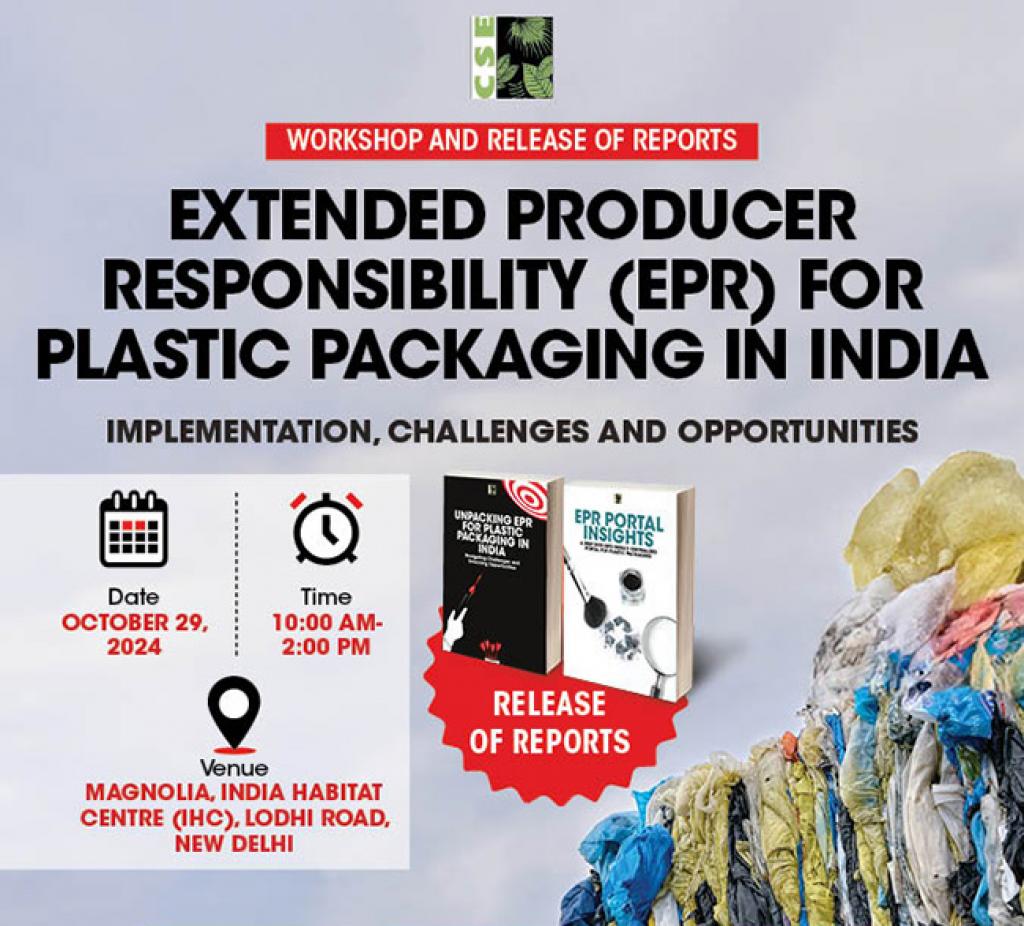
- 03 Nov 2024
In News:
Centre for Science and Environment release a report on Extended Producer Responsibility (EPR) for Plastic Packaging
Key Findings:
- EPR Guidelines (2022) were a step towards enforcing the "polluter pays" principle, but the system faces significant issues in its implementation and registration processes.
- Centre for Science and Environment (CSE) report, released on October 29, 2024, highlights gaps in the EPR system for plastic packaging and suggests corrective actions.
EPR Guidelines Overview:
- Issued by: Union Ministry of Environment, Forest and Climate Change (MoEFCC).
- Objective: Hold producers, importers, brand owners (PIBOs), and plastic waste processors (PWPs) responsible for managing plastic packaging waste.
- Key Requirements:
- PIBOs must register on a centralized portal and set targets for collection, recycling, and reuse of plastic packaging.
- Registration involves compliance with targets on end-of-life recycling and recycled content usage.
Problems Identified in the Current EPR System:
- Low Registration and Enrollment:
- 41,577 registrations on the EPR portal, but a significant discrepancy in the type of stakeholders registered.
- 83% of registered entities are importers, 11% are producers, and only 6% are brand owners.
- Producers contribute 65% of the plastic packaging in the market but have low registration.
- Absence of Key Polluters:
- Manufacturers of virgin plastics are notably absent from the portal, despite being required to register.
- Fraudulent Practices:
- 700,000 fake certificates were generated by plastic recyclers, far exceeding the actual certificate generation capacity.
- The Central Pollution Control Board (CPCB) found that such fraudulent activities are undermining the integrity of the system.
- For example, end-of-life co-processing units (e.g., cement plants) claimed to have processed 335.4 million tonnes per annum of plastic waste, while their actual capacity is just 11.4 million tonnes per annum.
- Underreporting and Mismanagement:
- Despite 23.9 million tonnes of plastic packaging being introduced into the market, the CPCB’s estimation of plastic waste generation (4.1 MT annually) is underestimated.
- Lack of Stakeholder Representation:
- Urban local bodies and informal waste collectors—key contributors to plastic waste management—are not included in the EPR framework, which limits their incentives and support.
Recommendations for Improvement:
- Incorporate the Informal Sector:
- Recognize informal waste collectors and waste management agencies in the EPR framework to improve traceability and ensure better waste management.
- Eliminate Fraudulent Practices:
- Strict actions need to be taken against fraudulent recyclers and fake certificate issuers to restore credibility to the EPR system.
- Establish Fair Pricing for EPR Certificates:
- Undertake baseline cost studies to determine the true costs of plastic waste management, ensuring fair pricing for recycling certificates and preventing undervaluation.
- Standardize Packaging:
- Focus on product standardization to ensure that packaging materials are uniform and easily recyclable.
- Strengthen Monitoring:
- Improve oversight on the registration process and ensure that all polluters (producers, importers, brand owners) comply with the system’s guidelines.
EPR and Plastic Waste Management: Context and Importance
- Extended Producer Responsibility (EPR) is a policy approach where the responsibility of managing the entire lifecycle of plastic products (from production to disposal) lies with the producer.
- It is an essential part of India’s Plastic Waste Management Rules (2016), which mandate the recycling and proper disposal of plastic packaging waste.
Key Elements of EPR:
- Producer Accountability: Producers are responsible for the take-back, recycling, and final disposal of plastic packaging.
- Waste Minimization: Encourages reducing waste at the source by promoting sustainable packaging designs.
- Lifecycle Approach: Considers the entire lifecycle of the product, focusing on sustainability from production to disposal.
- Polluter Pays Principle: Ensures that the cost of waste management is borne by those responsible for generating the waste.
Announcement of AI Centres of Excellence
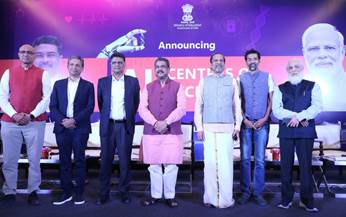
- 16 Oct 2024
In News:
Union Minister for Education, Shri Dharmendra Pradhan, announced the establishment of three AI Centres of Excellence (CoE) focused on Healthcare, Agriculture, and Sustainable Cities in New Delhi.
Key Details:
- Establishment of Three AI-CoEs:
- Focus Areas:
- Healthcare: Led by AIIMS and IIT Delhi.
- Agriculture: Led by IIT Ropar, Punjab.
- Sustainable Cities: Led by IIT Kanpur.
- Collaboration: CoEs will work with industry partners and start-ups.
- Focus Areas:
- Financial Commitment:
- Total Approved Budget: ?990 crore for FY 2023-24 to FY 2027-28.
- Purpose: Support the establishment and operation of the CoEs.
- Vision and Impact:
- Pradhan emphasized the CoEs' role as solution providers for global public good.
- Expected to create a new generation of job and wealth creators.
- Aims to strengthen India's credentials in the global AI landscape.
- Leadership and Implementation:
- Apex Committee: Co-chaired by Shri Sridhar Vembu (Zoho CEO).
- Committee includes industry leaders and academic heads.
- Shri K. Sanjay Murthy highlighted the importance of interdisciplinary research and collaboration.
- Future Prospects:
- Dr. Vembu noted the CoEs will enhance the health of villages and cities, nurture talent, and generate opportunities.
- The initiative aligns with India's vision of "Viksit Bharat" (Developed India).
- Presentation and Film:
- Insights into the development of AI-CoEs presented by Smt. Saumya Gupta.
- A short film titled "Make AI in India and Make AI work for India" was showcased.
The establishment of these Centres of Excellence in AI signifies a major step toward fostering an effective AI ecosystem in India, aimed at developing scalable solutions and enhancing human resources in critical sectors.
Indian Cyber Crime Coordination Centre (I4C)
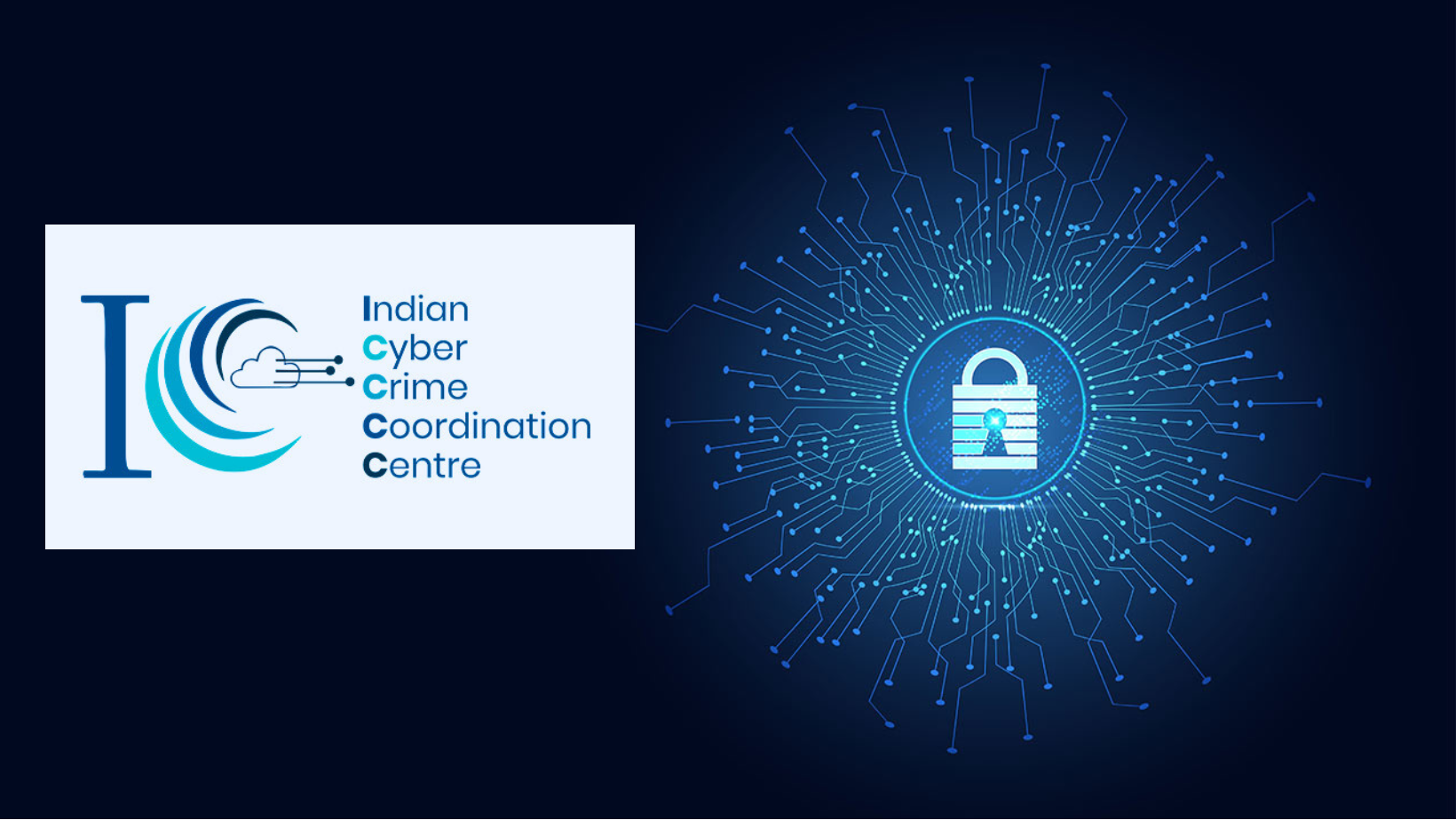
- 15 May 2024
Why is it in the News?
The Indian Cyber Crime Coordination Centre (I4C), in collaboration with Microsoft, has blocked more than 1,000 Skype IDs involved in blackmail, extortion, and “digital arrests” by cybercriminals posing as police and law enforcement authorities.
About Indian Cyber Crime Coordination Centre (I4C):
- The Indian Cyber Crime Coordination Centre (I4C) is a comprehensive initiative to address cybercrime in India.
- It has been established under the Ministry of Home Affairs (MHA) Govt. of India.
- With a focus on improving coordination between various Law Enforcement Agencies (LEAs) and stakeholders, I4C serves as a nodal point in the fight against cybercrime.
- It is located in New Delhi.
Its primary functions include:
- Acting as the central hub for tackling cybercrime and coordinating efforts among LEAs.
- Identifying research needs and collaborating with academia and research institutes within India and abroad to develop new technologies and forensic tools.
- Preventing the misuse of cyberspace by extremist and terrorist groups.
- Suggesting amendments to cyber laws to keep pace with evolving technologies and fostering international cooperation.
- Coordinating activities related to the implementation of Mutual Legal Assistance Treaties (MLAT) with other countries concerning cybercrimes, in consultation with the concerned nodal authority in MHA.
Key Components of the Indian Cyber Crime Coordination Centre (I4C):
- The I4C is comprised of several specialized units designed to tackle various aspects of cybercrime:
- National Cybercrime Threat Analytics Unit (TAU): Regularly reports on cybercrime threats and provides crucial insights to support the nation's cybersecurity efforts.
- National Cybercrime Reporting Portal (NCRP): Offers a unified platform for citizens to report various cybercrime complaints around the clock from anywhere in India.
- National Cybercrime Training Centre (NCTC): Imparts essential training to government officials, primarily focusing on state law enforcement agencies.
- National Cybercrime Research and Innovation Centre: Conducts research and develops indigenous tools for preventing cybercrimes.
- Platform for Joint Cyber Crime Coordination Team: Facilitates coordination, sharing of cybercrime modus operandi, and data/information exchange among state/UT LEAs.
- Cybercrime Ecosystem Management Unit: Focuses on creating mass awareness regarding cyber hygiene and prevention of cybercrimes.
- National Cybercrime Forensic Laboratory (Investigation) Ecosystem: Assists LEAs in cyber forensics investigations.
- In addition to these components, the I4C also fosters collaboration between academia, industry, the public, and government entities in the prevention, detection, investigation, and prosecution of cybercrimes.
- Through the Cyber Crime Volunteers Program, the I4C unites passionate citizens who are committed to serving the nation and contributing to the fight against cybercrime.
PS4 Engine
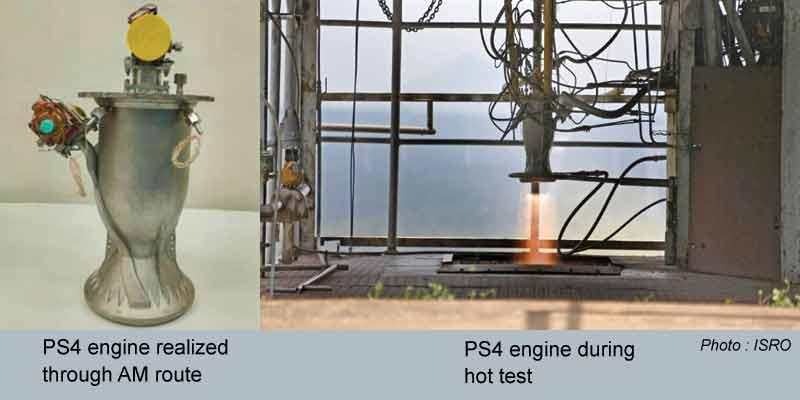
- 11 May 2024
Why is it in the News?
Recently, the Indian Space Research Organisation (ISRO) successfully tested a liquid rocket engine made with the help of additive manufacturing technology — commonly known as 3D printing.
About PS4 Engine:
- ISRO has successfully conducted a long-duration test of its PS4 engine, re-designed for production using cutting-edge additive manufacturing (AM) techniques, also known in common parlance as 3D printing, and crafted in the Indian industry.
- The PS4 engine is the uppermost stage of the Polar Satellite Launch Vehicle (PSLV), comprising two Earth-storable liquid engines.
- The engine uses the earth-storable bipropellant combinations of Nitrogen Tetroxide as oxidiser and Mono Methyl Hydrazine as fuel in pressure-fed mode.
- It was developed by ISRO's Liquid Propulsion Systems Centre (LPSC).
- LPSC redesigned the engine making it amenable to the Design for Additive Manufacturing (DfAM) concept thereby gaining considerable advantages.
- It was developed by ISRO's Liquid Propulsion Systems Centre (LPSC).
- The manufacturing of the engine was done by the Indian industry partner, Wipro 3D, and the engine was hot tested at ISRO Propulsion Complex, Mahendragiri, Tamil Nadu.
Why did ISRO use 3D printing to build the PS4 engine?
- The technology helped ISRO bring down the number of parts in the engine from 14 to a single piece.
- The space agency was able to eliminate 19 weld joints and saved 97% of the raw material.
- It also reduced the overall production time by 60%.
What is 3D Printing?
- 3D printing is a process that uses computer-created design to make three-dimensional objects layer by layer.
- It is an additive process, in which layers of a material like plastic, composites or bio-materials are built up to construct objects that range in shape, size, rigidity, and colour.
How is 3D printing done?
- To carry out 3D printing, one needs a personal computer connected to a 3D printer.
- All they need to do is design a 3D model of the required object on computer-aid design (CAD) software and press ‘print’.
- The 3D printer does the rest of the job.
- 3D printers construct the desired object by using a layering method, which is the complete opposite of the subtractive manufacturing processes.
- The (3D) printers act generally the same as a traditional inkjet printer in the direct 3D printing process, where a nozzle moves back and forth while dispensing a wax or plastic-like polymer layer-by-layer, waiting for that layer to dry, then adding the next level.
- It essentially adds hundreds or thousands of 2D prints on top of one another to make a three-dimensional object.
- Notably, these machines are capable of printing anything from ordinary objects like a ball or a spoon to complex moving parts like hinges and wheels.
- We can print a whole bike, handlebars, saddle, frame, wheels, brakes, pedals and chain–ready assembled, without using any tools.
- It’s just a question of leaving gaps in the right places.
Shaksgam Valley
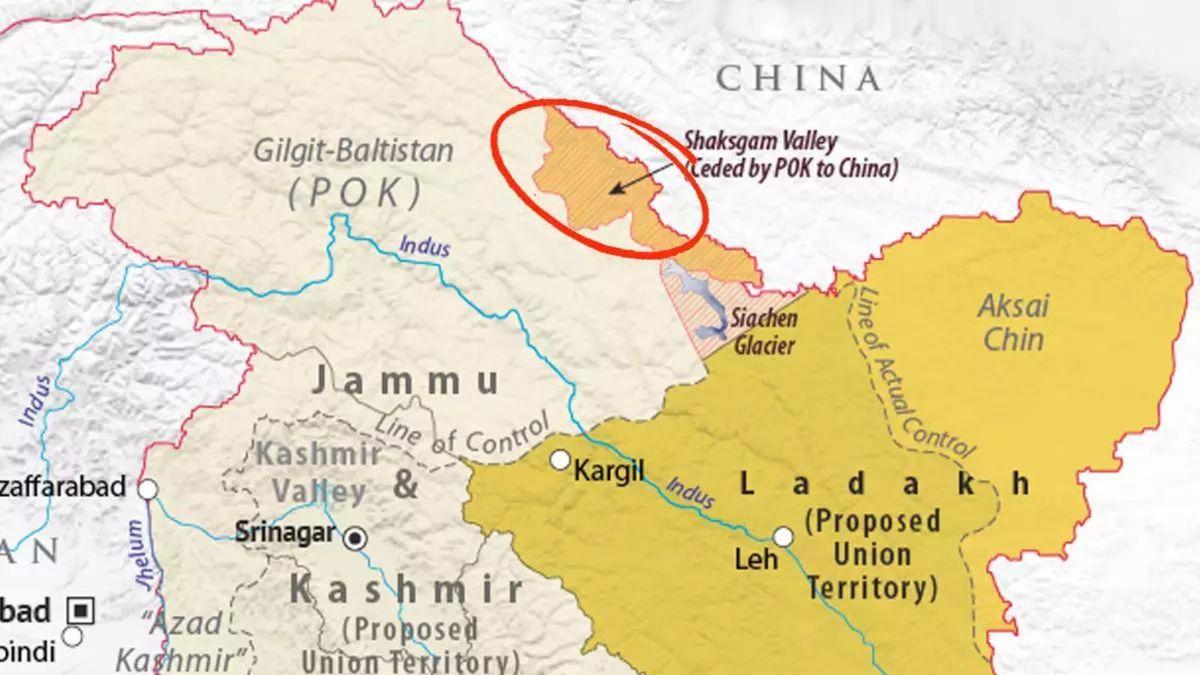
- 03 May 2024
Why is it in the News?
India recently said it has lodged a strong protest with China for carrying out construction activities in the Shaksgam Valley in an "illegal" attempt to alter the situation on the ground.
Context:
- Recently, the Ministry of External Affairs (MEA) said that the Shaksgam Valley is a part of the territory of India amid reports of China building infrastructure in the valley.
- The Shaksgam Valley strategically located region that is now part of Pakistan-occupied Kashmir.
- MEA spokesperson Randhir Jaiswal recently said that India "never accepted the so-called China-Pakistan Boundary Agreement of 1963 through which Pakistan unlawfully attempted to cede the area to China".
- Lodging a strong protest with China for carrying out construction activities, India called it an "illegal" attempt to alter the situation on the ground.
Where is the Shaksgam Valley Located?
- The Shaksgam Valley, or the Trans Karakoram Tract, is part of the Hunza-Gilgit Region of PoK.
- It is bordered by the Xinjiang Province of the People's Republic of China to the north.
- The northern areas of PoK are to its west and south.
- And the Siachen Glacier region to the east.
How did Pakistan cede Shaksgam valley to China?
- In 1963, Pakistan ceded the Shaksgam Valley to China when it signed a border agreement with Beijing to settle their border disputes.
- But, Article 6 of the 1963 agreement clearly stated that “the two Parties have agreed that after the settlement of the Kashmir dispute between Pakistan and India, the sovereign authority concerned will reopen negotiations with the Government of the People's Republic of China, on the boundary as described in Article 2 of the present Agreement, to sign a formal Boundary Treaty to replace the present agreement.”
- The agreement laid the basis for the construction of the Karakoram Highway, which was jointly built by Chinese and Pakistani engineers during the 1970s.
What is the History of Shaksgam Valley?
- When the British asked the Mir of Hunza, a vassal of the Maharaja of Kashmir, to give up his rights to the Taghdumbash Pamirs and the Raskam valley in 1936, the Shaksgam valley to the south-west had remained in his possession.
- This remained the traditional frontier of British India until independence and was inherited by India following Jammu & Kashmir's accession in 1947.
- And, this was the border that Pakistan compromised in its 1963 agreement with China.
- Pakistan established diplomatic relations with the People's Republic of China in 1951.
- Back then, Pakistan was viewed as a member of the non-Soviet block due to its membership in two anti-communist military pacts -- SEATO and CENTO -- led by the United States.
- China was on the opposite side.
- After Chinese troops invaded Tibet in 1950, Pakistan even offered transit facilities to US aircraft so they could supply equipment to Tibetan rebels.
- Chinese troops began to cross the border in eastern Hunza after the Partition of India.
- This started in 1953 and in 1959 they took some livestock out of the area.
- This prompted a furious response from Pakistan, which was determined to protect its borders.
- The then President of Pakistan, Ayub Khan, however, saw an opportunity to appease the Chinese in the late 1950s as India-China relations were rapidly deteriorating.
- Subsequently, Beijing developed closer ties with Islamabad after the India-China War of 1962.
- China went on to support Pakistan diplomatically during the 1965 India-Pakistan war.
- Amid these developments, Pakistan chose to downgrade historical claims made by the Mir of Hunza and signed over the Shaksgam Valley to China in 1963.
What was the Consequence?
- In granting China's claim to a border along the Karakoram Range, Pakistan compromised India's traditional frontier along the KunLun Range to the northwest of the Karakoram Pass.
- It also allowed China to extend a claim eastward along the Karakoram in Ladakh.
- This enabled China to claim all of Aksai-Chin.
National Centre for Good Governance (NCGG)
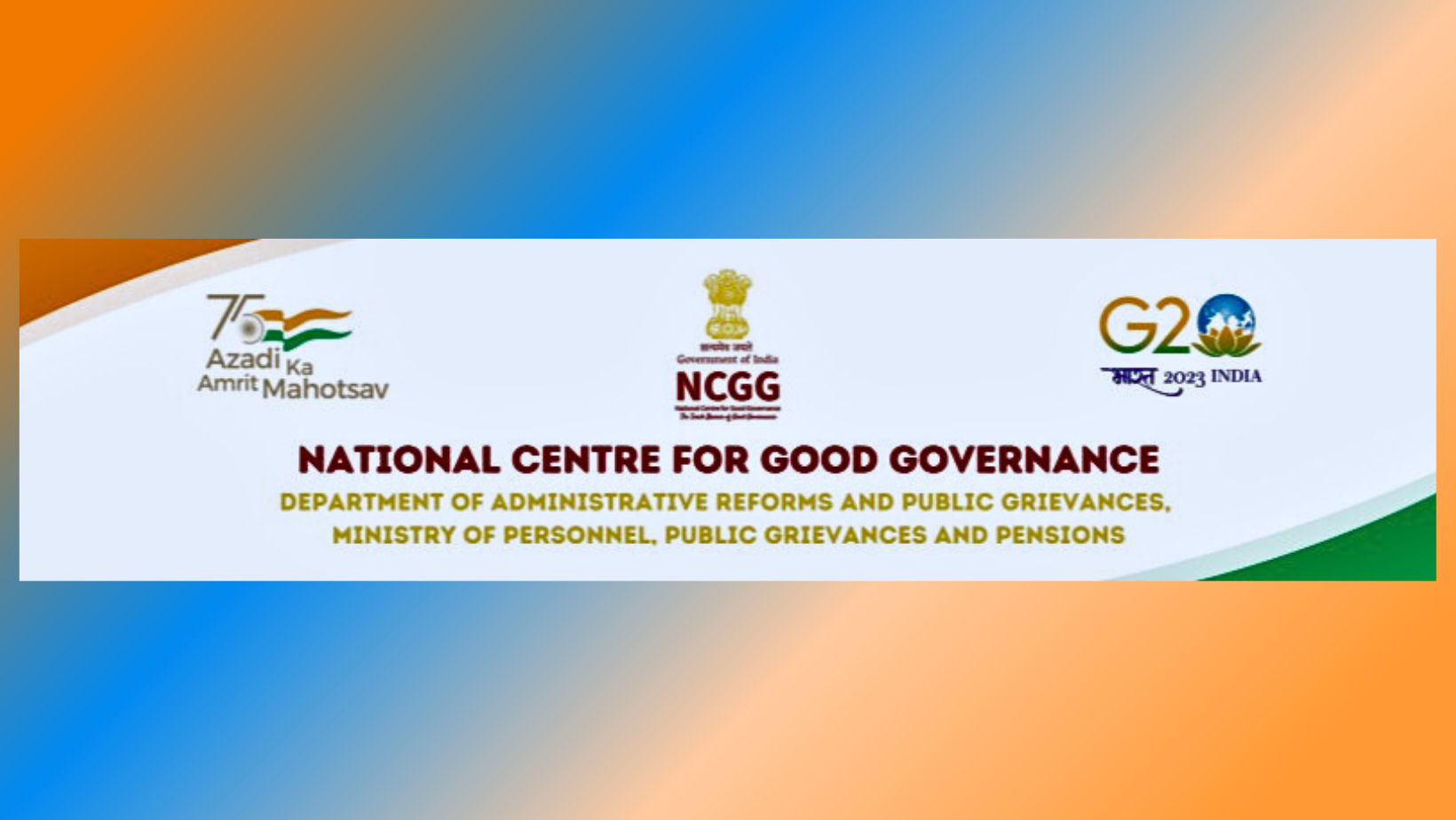
- 29 Apr 2024
Why is it in the News?
A central government delegation is on a three-day visit to Bangladesh beginning Sunday to further boost bilateral ties on governance matters, according to an official statement.
About the National Centre for Good Governance:
- The National Centre for Good Governance (NCGG) was set up in 2014 by the Government of India as an apex–level autonomous institution under the Ministry of Personnel, Public Grievances and Pensions.
- The Centre traces its origin to the National Institute of Administrative Research (NIAR), which was set up in 1995 by the Lal Bahadur Shastri National Academy of Administration (LBSNAA), the Government of India's topmost training institute for civil services.
- NIAR was subsequently rechristened and subsumed into NCGG.
- NCGG deals with a gamut of governance issues from local, state to national levels, across all sectors.
- The Centre is mandated to work in the areas of governance, policy reforms, capacity building, and training of civil servants and technocrats of India and other developing countries.
- It also works as a think tank.
- Since its inception, the Centre has been extensively working in areas such as primary and elementary education, decentralized planning at district and block levels, capacity building of Panchayat Raj Institutions (PRIs), participatory models of learning and action, rural development, cooperatives, and public sector management, etc.
- In addition, it focuses on issues related to good governance, social accountability, water, sanitation, and hygiene (WASH), among other sectors.
- The Centre encapsulates the essence of good governance and weighs on the importance of the rule of law, bringing in transparency, working to promote public participation in governance, service delivery, and reforms, as well as in developing accountable institutions, access to information, etc.
National Curriculum for Early Childhood Care and Education 2024
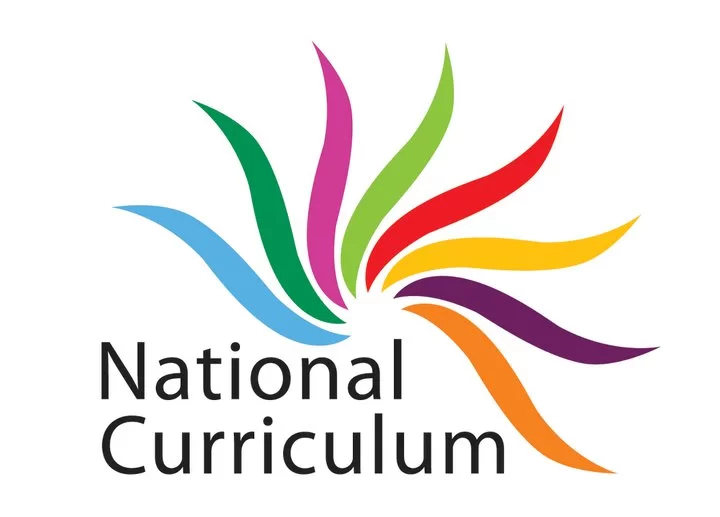
- 20 Apr 2024
Why is it in the News?
For the first time ever, the Central government has released a curriculum advisable to be taught to children aged three to six years old, thus giving an impetus to pre-school learning in 14 lakh anganwadis across the country.
About National Curriculum for Early Childhood Care and Education 2024:
- The National Curriculum for Early Childhood Care and Education 2024 introduces Aadharshila, a comprehensive 48-week curriculum tailored for children aged three to six years attending anganwadis.
- Developed through collaboration among the Ministry of Women and Child Development, the Ministry of Health and Family Welfare, the Department of School Education and Literacy, the Ministry of Education, the NCERT, the Institute of Home Economics at Delhi University, and civil society organizations, Aadharshila serves as a foundational learning framework.
??Key Features:
- The curriculum introduces a weekly play calendar, initiating with four weeks of academic activities facilitating the transition from home to Anganwadi centers through engaging play.
- Over the subsequent 36 weeks, children engage in diverse activities such as storytelling, rhymes, arts, and crafts, fostering exploration, free play, conversation, creation, and appreciation.
- Storytelling themes promote values like conflict resolution, responsibility, and cooperation.
- Children delve into topics including colors, shapes, numbers, senses, family, and friends, enhancing skills in listening, following instructions, counting, and recognizing sounds, alongside exploring themes like seasons and festivals.
- The final eight weeks focus on reinforcing previous learnings through worksheets and performance observation.
- Activities and timetables are age-specific, with detailed material requirements, variations, teacher notes, curricular goals, and competency assessments.
- The curriculum spans three years, targeting at least 48 weeks of learning, fostering skills crucial for Grade 1 transition such as listening, vocabulary, imagination, and social development.
- Special provisions ensure screening, inclusion, and referrals for children with disabilities in all activities.
- The national framework lays the foundation for states to develop culturally relevant curricula, addressing future schooling challenges effectively.
Green Credit Programme (GCP)

- 18 Apr 2024
Why is it in the News?
The Environment Ministry recently has made significant changes to the Norms of the Green Credit Programme.
What is the Green Credit Programme (GCP)?
- An innovative initiative by the Ministry of Environment, Forest and Climate Change (MoEF&CC).
- Announced under the 'Lifestyle for Environment' (LiFE) movement.
- It aims to establish a market-based mechanism to incentivize voluntary environmental actions by individuals, urban local bodies, communities, and the private sector.
Target Sectors and Stakeholders:
- Designed to encourage voluntary environmental actions across various sectors.
- Engages diverse stakeholders, including individuals, communities, private sector industries, and companies.
Initial Focus Areas:
- Water conservation: Encourages efficient use and management of water resources.
- Afforestation: Promotes tree planting and forest restoration to enhance carbon sequestration and biodiversity.
Programme Implementation:
- The GCP's governance structure is overseen by an inter-ministerial Steering Committee, with the Indian Council of Forestry Research and Education (ICFRE) serving as the program administrator.
- ICFRE manages the implementation, monitoring, and operation of the program.
- A user-friendly digital platform will simplify project registration, verification, and issuance of Green Credits.
- ICFRE, in collaboration with experts, is developing the Green Credit Registry and trading platform to facilitate the registration and trading of Green Credits.
- Entities and individuals must register their activities with the government to earn Green Credits.
- Verification of activities will be conducted by a designated agency, with self-verification available for small projects.
Programme Impact:
- The GCP strives to encourage environmentally beneficial actions by creating tradable green credits through a market-oriented approach.
- These green credits can be traded on a domestic market platform, providing further incentives for positive environmental actions.
- Additionally, if the generation of green credits results in measurable reductions or removals of carbon emissions, they may also qualify for carbon credits.
Programme Adjustments:
- In response to concerns regarding the potential misuse of the GCP for profit-driven tree planting, the government has emphasized the importance of prioritizing ecosystem restoration over mere tree planting.
- Indigenous species will be preferred, and naturally occurring seedlings will be preserved.
- The previous requirement of a minimum of 1,100 trees per hectare to qualify as a reforested area has been revised, with States now tasked to define specific criteria.
- State forest departments will be responsible for the actual implementation of afforestation efforts.
Armed Forces (Special Powers) Act (AFSPA)
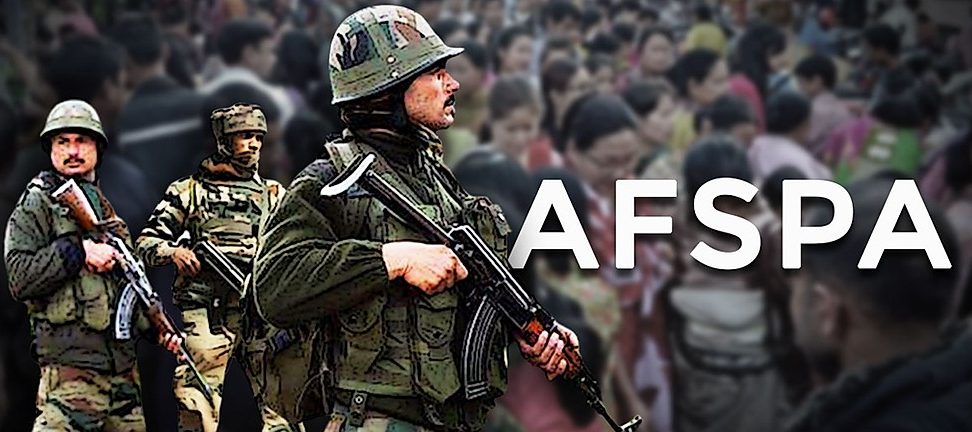
- 27 Mar 2024
Why is it in the News?
Union Home Minister Amit Shah has said the Jammu and Kashmir Assembly elections will be held before September and that the Centre will consider revoking the Armed Forces (Special Powers) Act there.
What is AFSPA?
- The AFSPA empowers the armed forces to uphold law and order in “disturbed areas.”
- They have the right to prevent a gathering of five or more people in a given location, use force, or even open fire after providing a sufficient warning if they believe someone is breaking the law.
- Armed forces are also permitted to enter and search any location if they suspect illegal activity.
- According to the AFSPA Act, the Army also has the authority to detain someone without a warrant, seize weapons and ammunition, and offer protection to someone acting in good faith.
Salient features of the AFSPA Act:
- The Central Government or the Governor of a State has the right to declare all or a part of any state to be a disturbed region if they believe it is necessary to stop the terrorist activity or any other activity that could jeopardize India’s sovereignty or be disrespectful to the national anthem, flag, or constitution.
- According to Section 3 of the AFSPA, the Central Government may send out armed forces to support the civilian authorities if the governor of a state publishes a formal announcement in the Gazette of India.
- According to the Disturbed Areas Act of 1976, a territory must maintain the status quo for a minimum of three months after being designated “disturbed.”
- Section (4) of the AFSPA grants army officers specific authority to shoot the only requirement is that the officer must sound the alarm before firing.
- Security forces have the authority to search without permission and arrest anyone without a warrant.
- After being taken into custody, a person must be delivered to the closest police station as soon as possible.
- The Central Government must first provide its consent before prosecuting an on-duty officer for alleged human rights violations.
What are the “Disturbed areas” under the AFSPA Act?
- The state governor, the administrator of the union territory, or the central government may declare a region as a “disturbed area” by publishing a notice in the official gazette, the entire territory or an order to implement it may be declared disturbed.
- It is up to the state governments to decide whether or not to implement the Act.
- However, the governor or the Center may disregard their judgment under Section (3) of the Act.
- The state governor was the only person with the authority to confer AFSPA when the act came into force in 1958.
- The 1978 amendment granted the central government this authority.
List of states that implement the AFSPA Act:
- Four states and one union territory currently have AFPSA activities, while 12 districts are still partially subject to the act, and 31 districts have fully implemented the law.
The AFSPA states include:
-
- Jammu & Kashmir
- Nagaland
- Assam
- Arunachal Pradesh
- Manipur
Smart Meter National Programme (SMNP)

- 26 Mar 2024
Why is it in the News?
Kerala's shift towards an alternative approach for the implementation of smart electricity meters, sidelining the Central government's Rs 3 lakh crore project, poses a challenge to the Union Government's initiative of replacing 250 million traditional meters with smart meters in all households by March 2025.
About the Smart Meter National Programme (SMNP):
- The Indian government has initiated the Smart Meter National Programme (SMNP) to revolutionize the country's energy sector through the implementation of smart meters.
- By replacing 25 crore conventional meters, the SMNP aims to enhance the operational efficiency and revenue management of distribution companies (DISCOMs).
- Under the leadership of Energy Efficiency Services Limited (EESL), a joint venture of four National Public Sector Enterprises, the scheme is set to make waves in the energy sector.
- EESL, comprised of NTPC Limited, PFC, REC, and POWERGRID, operates under the Ministry of Power and is committed to undertaking the necessary capital and operational expenditures with zero upfront investment from states and utilities.
- The Build-Own-Operate-Transfer (BOOT) model facilitates the recovery of smart meter costs via the monetization of energy savings resulting from improved billing accuracy, reduced meter reading costs, and increased efficiency.
- In accordance with guidelines set forth by the Central Electricity Authority (CEA), the strategic deployment of these smart meters adheres to industry standards.
Smart meters offer a multitude of advantages:
-
- Consumers can monitor their electricity usage and make informed decisions to reduce their bills.
- Utilities benefit from enhanced operational efficiency, enabling better power demand management.
- Web-based Monitoring: The interconnected smart meter network can mitigate utilities' commercial losses, enhance revenue generation, and propel power sector reforms.
- The Smart Meter National Programme (SMNP) paves the way for a more efficient and sustainable energy landscape in India, revolutionizing the way utilities operate and consumers engage with their electricity usage.
What are Smart Meters?
- A smart meter serves as an advanced tool for recording electricity consumption and voltage levels, offering a significant upgrade over traditional metering systems.
- While conventional meters simply measure power usage, smart meters take it a step further by transmitting real-time data to utility providers at intervals of 15 minutes or hourly.
- Smart meters truly live up to their name by utilizing internet connectivity to facilitate two-way communication.
- On one hand, they empower consumers with up-to-date information on energy usage patterns, enabling them to make informed decisions and manage consumption more efficiently.
- On the other hand, utility providers gain valuable insights for monitoring purposes and ensuring accurate billing.
- In essence, smart meters pave the way for improved energy management, increased transparency, and enhanced efficiency, catering to the evolving needs of both consumers and utility providers in today's digital era.
Tesla’s India entry gets boost as government approves new EV policy
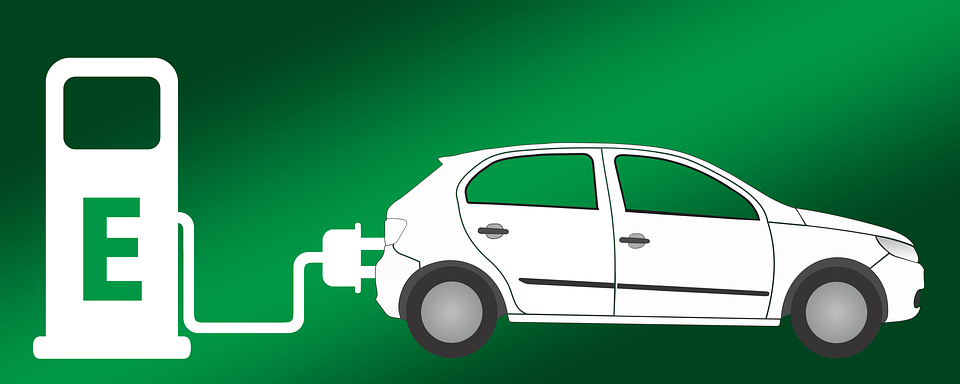
- 16 Mar 2024
Why is it in the News?
The government announced a new electric vehicle (EV) policy recently that is expected to provide a major boost to Tesla's plans to start operations in India.
What is the Revised EV Policy Offering Tax Incentives?
- The Government of India has sanctioned a new initiative aimed at positioning India as a premier manufacturing hub, fostering the production of cutting-edge electric vehicles (EVs) within the nation.
- Crafted to entice investments from renowned global EV manufacturers, this policy seeks to provide Indian consumers access to state-of-the-art EV technology while bolstering the Make in India campaign.
- By cultivating a competitive environment among EV players, the policy endeavors to fortify the EV ecosystem, stimulating innovation and efficiency.
- Furthermore, it is anticipated to stimulate substantial production rates, capitalize on economies of scale, and drive down production costs, consequently curbing crude oil imports, narrowing trade imbalances, and mitigating urban air pollution, thereby fostering a healthier environment for all.
Key Features of the Policy:
- Minimum Investment Requirement: Companies are mandated to invest a minimum of Rs 4,150 Crores.
- Investment Ceiling: There is no upper limit on the investment amount.
- Manufacturing Timeline: Companies must establish manufacturing facilities in India within 3 years and commence commercial production of e-vehicles.
- Within 5 years, they should achieve 50% domestic value addition.
- Domestic Value Addition (DVA): Localization levels of 25% by the 3rd year and 50% by the 5th year are mandatory during manufacturing.
- Customs Duty: A customs duty of 15%, applicable to Completely Knocked Down (CKD) units, will be enforced for 5 years.
- Import Limits: Import of at most 8,000 EVs annually is permitted under this scheme, with provisions for carrying forward unutilized import quotas.
- Bank Guarantee Requirement: Investment commitments necessitate bank guarantees to cover the forgone customs duty.
EV Adoption in India:
- In 2023, electric vehicle sales in India surged by 49.25% year-on-year, surpassing 15 lakh units, as the Federation of Automobile Dealers' Association (FADA) reported.
- This notable increase follows a total sale of approximately 10 lakh units recorded in 2022, indicating a rapid growth trajectory.
- Factors contributing to this surge include improved product availability, escalating fuel prices, state subsidies, and incentives provided under the FAME-II Initiative.
What is the FAME-II Scheme?
- The FAME India scheme, initiated in 2015, serves as an incentive program aimed at accelerating the adoption of electric and hybrid vehicles, with its acronym standing for "Faster Adoption and Manufacturing of Electric and Hybrid Vehicles in India."
- In 2019, the Central government sanctioned Phase II of the FAME Scheme with a budgetary allocation of 10,000 Crore over three years, extending until March 31, 2024.
- The primary objective of Phase II is to stimulate demand by facilitating the deployment of 7000 e-Buses, 5 lakh e-3 Wheelers, 55,000 e-4 Wheeler Passenger Cars (including Strong Hybrid), and 10 lakh e-2 Wheelers, thereby fostering the growth of the electric vehicle ecosystem.
- Under the FAME-II scheme, nearly 2 lakh vehicles have received support, signifying a significant stride towards electric vehicle adoption in the country.
Government Initiatives to Promote EV Usage:
- Battery Swapping Policy: The Battery Swapping Policy offers an alternative approach wherein discharged batteries are exchanged for charged ones, enabling efficient charging without vehicle downtime.
- NITI Aayog has recently unveiled a draft battery-swapping policy, prioritizing metropolitan cities with populations exceeding 40 lakh for the establishment of battery-swapping networks in the initial phase.
- Switching to EVs: Central and State governments extend upfront subsidies to mitigate the overall costs associated with electric vehicles, incentivizing consumers to transition towards cleaner mobility options.
- E-AMRIT Portal: The e-AMRIT portal serves as a comprehensive platform, furnishing resources and support to facilitate the seamless transition to electric vehicles, thereby bolstering the nation's electrification agenda.
Centre increases Fair and Remunerative Prices of sugarcane
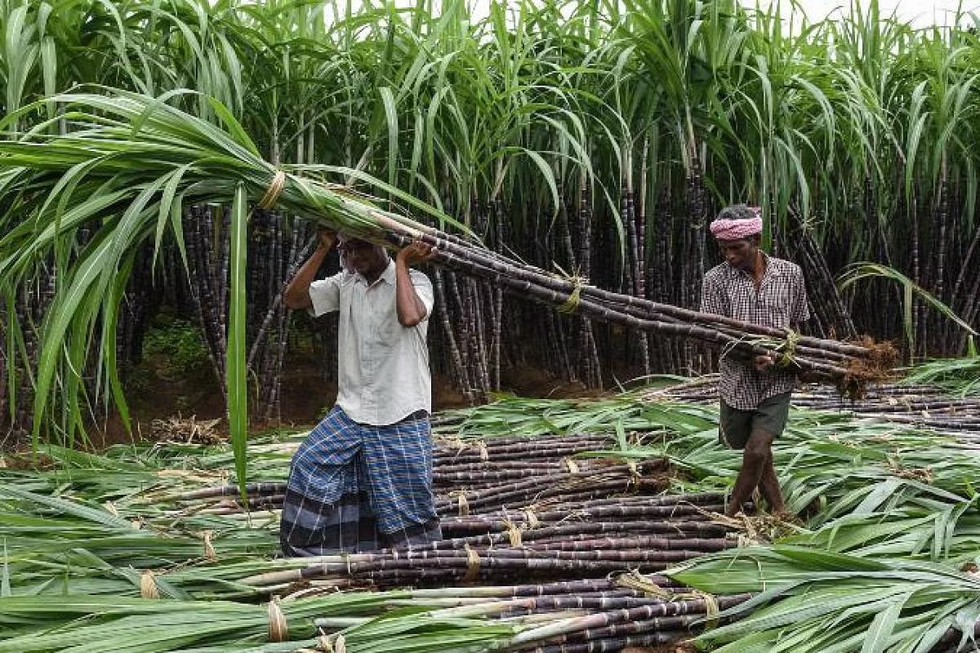
- 22 Feb 2024
Why is it in the News?
The Cabinet Committee on Economic Affairs recently approved ?340/quintal as the Fair and Remunerative Price (FRP) of sugarcane for the sugar season 2024-25 at a sugar recovery rate of 10.25%.
What is the Fair and Remunerative Price (FRP)?
- FRP was introduced by the government in 2009 by an amendment to the Sugarcane (Control) Order, 1966.
- It replaced the Statutory Minimum Price (SMP) on the Commission for Agricultural Costs and Prices (CACP) consultation.
- The FRP system assured timely payment to farmers, irrespective of the profit and loss to sugar mills.
- Further, the new system made it mandatory for sugar mills to pay the farmers within 14 days of delivery of sugarcane.
- Additionally, the FRP system introduced grading on the basis of sugar recovery rate from sugarcane wherein a premium was paid to the farmer on higher recovery and a reduction in rates on lower recovery.
- The FRP is based on the Rangarajan Committee report on reorganising the sugarcane industry.
Factors Considered for Announcing FRP:
-
- Cost of production of sugarcane
- Return to the growers from alternative crops and the general trend of prices of agricultural commodities
- Availability of sugar to consumers at a fair price
- The price at which sugar produced from sugarcane is sold by sugar producers
- Recovery of sugar from sugarcane
- The realisation made from the sale of by-products viz. molasses, bagasse and press mud or their imputed value
- Reasonable margins for the growers of sugarcane on account of risk and profits
Effect of the New FRP:
- Sugar production in India was hit hard in the October-December 2023 quarter as production fell by 11.21 million metric tonnes;
- It was 12 million in the same quarter the previous year.
- The increase in FRP is going to increase the cost for producers.
- The increased FRP will benefit over five crore sugarcane farmers in the country, however, the increase in production cost could affect end-consumers as well.
- Factors such as FRP hikes, akin to MSP, make it attractive to farmers but also increase prices in the local market as mills pass on that cost to consumers
Revised Guidelines for Community Radio Stations (ET)
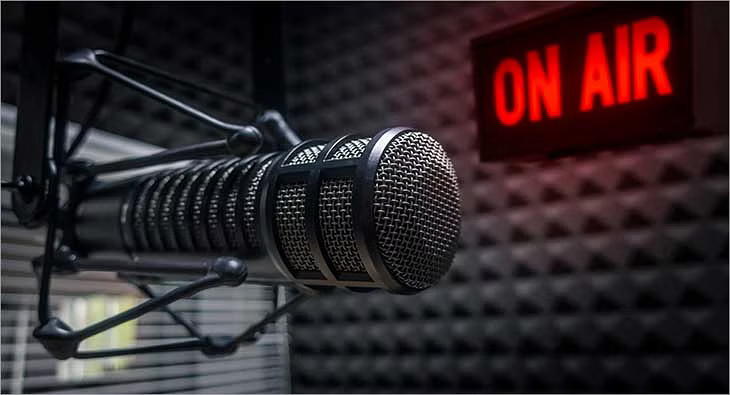
- 14 Feb 2024
Why is it in the News?
With a view to ensuring the growth of the community radio sector, the Union government on Tuesday increased the advertising time for community radio stations as well as the tariff rate for advertisements.
What are Community Radio Stations (CRSs?
- Community radio stations (CRSs) are low-power radio stations with a coverage area of approximately a 10-15 km radius, depending on the area’s geography, which is meant to be set up and operated by local communities.
- They offer a platform where content is disseminated in localized dialects and regional languages.
- Local, context-specific issues are raised and discussed in these stations in local idioms.
- India's first community radio station (CRS) was inaugurated on the campus of Anna University in 2004.
- Currently, there are 481 CRSs in India.
About the Revised Policy Guidelines:
- Under the revised policy, the government has permitted any eligible organisation functional in multiple districts to set up a maximum of six community radio stations in different districts.
- The advertising time for community radio stations has been increased from seven minutes per hour to 12 minutes per hour, while the rate of advertisement has been hiked from Rs 52 to Rs 74 per 10 seconds, the guidelines stated.
- The policy also fixed the validity of the letter of intent issued to an organisation to one year, with a buffer of three months to the applicant for any unforeseen circumstances.
- The revised policy guidelines are expected to fuel the growth of the community radio sector.
- The guidelines stated that the licensee would set up an advisory and content committee comprising members of the local community, with 50 per cent representation for women.
SAMARTH Centers (PIB)
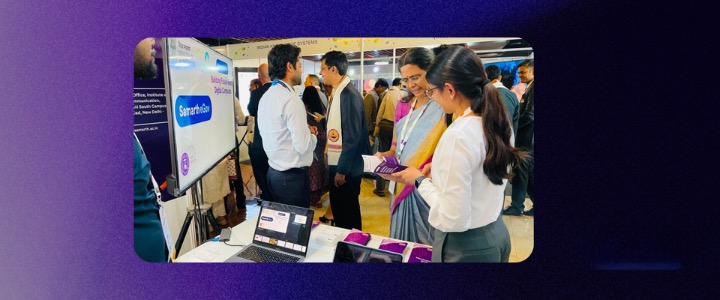
- 07 Feb 2024
Why is it in the News
Recently, the Minister of State for Heavy Industries informed the Lok Sabha about SAMARTH Centres.
About SAMARTH Centres:
- The Smart Advanced Manufacturing and Rapid Transformation Hub (SAMARTH) centers are established under the Scheme for "Enhancement of Competitiveness in the Indian Capital Goods Sector."
- These centers play a crucial role in assisting Micro, Small, and Medium Enterprises (MSMEs) by providing workforce training and raising awareness about Industry 4.0 technologies through:
- Organizing seminars, workshops, and knowledge-sharing events on Industry 4.0.
- Conducting training sessions to create awareness about Industry 4.0.
- Offering consultancy services (including in areas such as IoT hardware, software development, and data analytics) and providing incubation support to start-ups, including MSMEs.
Key Highlights of the Enhancement of Competitiveness in the Indian Capital Goods Sector Scheme:
- Initiated by the Ministry of Heavy Industries, this scheme aims to address technological obsolescence and improve access to quality industrial infrastructure and common facilities.
- Phase I of the scheme was launched in November 2014, focusing on skill development, infrastructure enhancement, and technology development in the Capital Goods Sector.
- Phase II, commenced on January 25, 2022, aims to amplify the impact created by Phase I by fostering a strong and globally competitive capital goods sector, contributing at least 25% to the manufacturing sector.
Components of the Scheme:
- Identification of Technologies through Technology Innovation Portals.
- Establishment of four New Advanced Centres of Excellence and augmentation of Existing Centres of Excellence.
- Promotion of skilling in the Capital Goods Sector, including the creation of qualification packages for skill levels 6 and above.
- Establishment of four Common Engineering Facility Centres (CEFCs) and augmentation of existing CEFCs.
- Augmentation of Existing Testing and Certification Centres.
- Establishment of ten Industry Accelerators for Technology Development.
Improved Fiscal Resilience Amid Modest Tax Buoyancy (Indian Express)
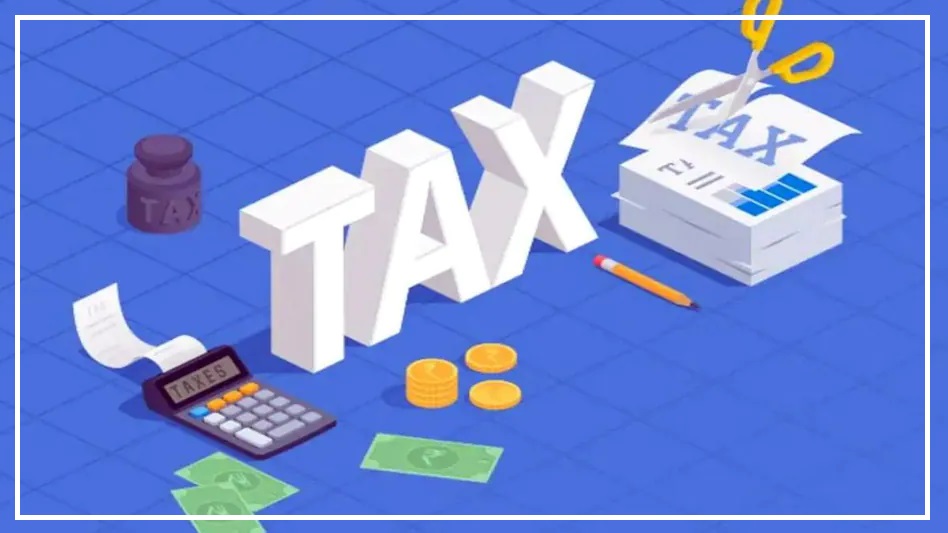
- 02 Feb 2024
Why is it in the News?
The government’s aim to restrict the fiscal deficit to 5.8 per cent of the Gross Domestic Product (GDP) as against 5.9 per cent budgeted earlier for the financial year and the push to restrict the fiscal deficit target to below 4.5 per cent by 2025-26 rides on the back of a strong buoyancy in tax revenues.
What is Tax Buoyancy?
- Tax buoyancy elucidates the correlation between fluctuations in government tax revenue growth and changes in Gross Domestic Product (GDP).
- This concept underscores the intrinsic link between the government's tax earnings and economic expansion.
- Essentially, as the economy accelerates, government tax revenue experiences a corresponding increase.
- Tax buoyancy delineates the responsiveness of tax revenue growth to alterations in GDP, signifying its sensitivity to economic fluctuations.
- A buoyant tax exhibits a revenue surge without necessitating a rise in tax rates, contingent upon factors such as the tax base's magnitude, tax administration efficiency, and the simplicity and rationality of tax structures.
- Typically, direct taxes demonstrate higher buoyancy, being more responsive to GDP growth rates.
What is Tax Elasticity?
- Tax elasticity, akin to tax buoyancy, refers to variations in tax revenue consequent to changes in tax rates.
- For instance, assessing how tax revenue fluctuates when the government reduces corporate income tax from 30 percent to 25 percent illustrates tax elasticity.
- This concept underscores the dynamic relationship between tax rates and revenue generation, reflecting the degree of responsiveness of tax revenue to alterations in tax rates.
About the Laffer Curve:
- The Laffer Curve, pioneered by economist Arthur Laffer in 1974, illustrates the interplay between tax rates and government tax revenue collection.
- This economic theory posits that tax rates exceeding a certain threshold diminish tax revenue by disincentivizing workforce participation.
- It suggests the existence of an optimal tax rate that maximizes total tax revenue.
- By visually depicting the inverse relationship between tax rates and tax revenue, the Laffer Curve highlights the complexities of tax policy and the importance of balancing tax rates to achieve revenue optimization.
Draft Indian Stamp Bill, 2023 (Indian Express)
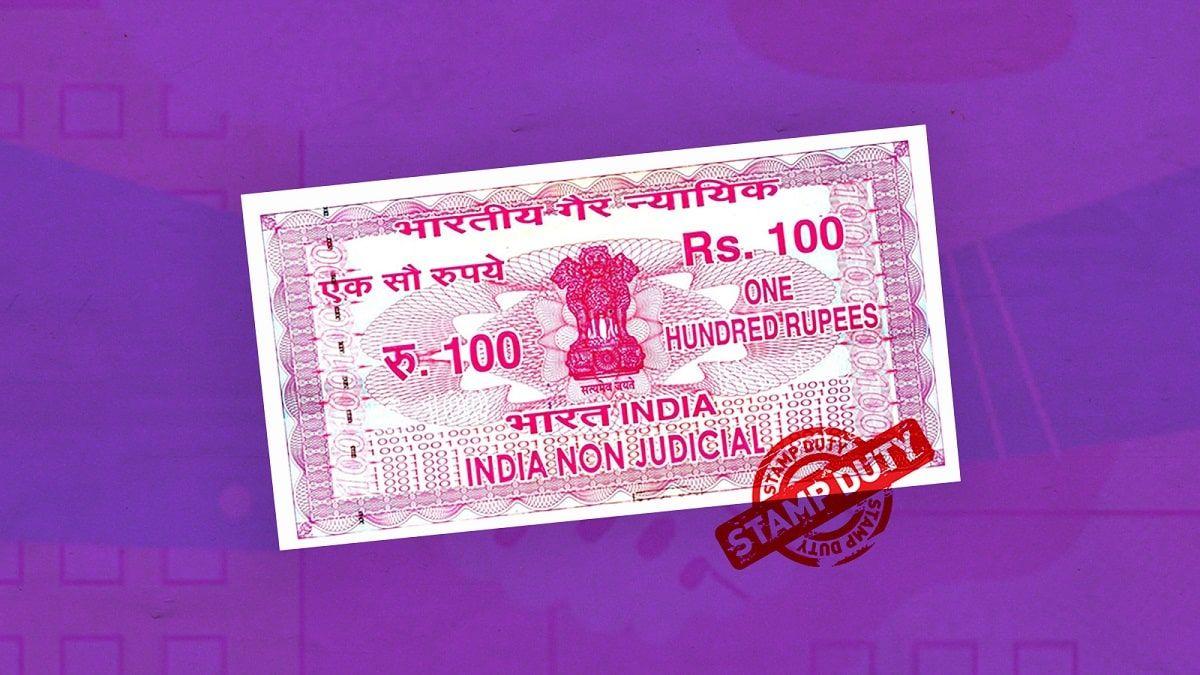
- 31 Jan 2024
Why is it in the News?
The Centre has proposed repealing the Indian Stamp Act, of 1899 and bringing in a new law for the stamp duty regime in the country.
What is Stamp Duty?
- A stamp duty is essentially a government tax, which is levied to register documents, like an agreement or transaction paper between two or more parties, with the registrar.
- Usually, the amount specified is fixed based on the document’s nature or is charged at a certain percentage of the agreement value stated in the document.
- Stamp duties can be levied on bills of exchange, cheques, promissory notes, bills of lading, letters of credit, policies of insurance, transfer of shares, debentures, proxies and receipts.
- Accepted as valid evidence in a court of law, stamp duties are levied by the Centre but appropriated by the concerned states within their territories under Article 268 of the Constitution.
Notable Provisions of the Draft Indian Stamp Bill, 2023:
Several provisions of the Indian Stamp Act, of 1899 have now become “redundant” or “inoperative” Therefore, the ministry has proposed repealing the existing Act and substituting it with new legislation to “reflect the present realities and objectives.”
- The draft Bill has introduced provisions for digital e-stamping.
- “Electronic stamp” or “e-stamp” means an electronically generated impression denoting the payment of stamp duty by electronic means or otherwise, according to Section 2 (18) of the Bill.
- There are also provisions for digital signatures.
- Section 2 (17) of the Bill states that the words “executed” and “execution”, used for instruments, will mean “signed” and “signature” and include attribution of electronic records and electronic signatures, as defined under the Information Technology (IT) Act, 2000.
- The IT Act defines “electronic records” as “data, record or data generated, image or sound stored, received or sent in an electronic form or micro film or computer generated microfiche.”
- Meanwhile, digital or electronic signature refers to the authentication of any electronic record by a subscriber through an electronic method or procedure.
- The draft Bill also proposes to raise penalties.
- It seeks to increase the maximum penalty amount from Rs 5,000 to Rs 25,000 for contravening any provisions of the law and impose Rs 1,000 per day for repeated offences.
What is the Indian Stamp Act, of 1899?
- The Indian Stamp Act, of 1899 is a fiscal or money-related statute that lays down the law relating to tax levied in the form of stamps on instruments recording transactions.
- Under Section 2 of the Act, an instrument includes every document by which any right or liability is or purports to be, created, transferred, limited, extended, extinguished or recorded.
- According to this Act, a “stamp” has been defined as “any mark, seal or endorsement by any agency or person duly authorised by the State Government, and includes an adhesive or impressed stamp, for the purposes of duty chargeable under this Act”.
- Section 3 of the 1899 Act prescribes that certain instruments or documents shall be chargeable with the amount indicated in Schedule 1 of the Act.
- These include bills of exchange or promissory notes.
India’s first graphene centre becomes reality (Indian Express)
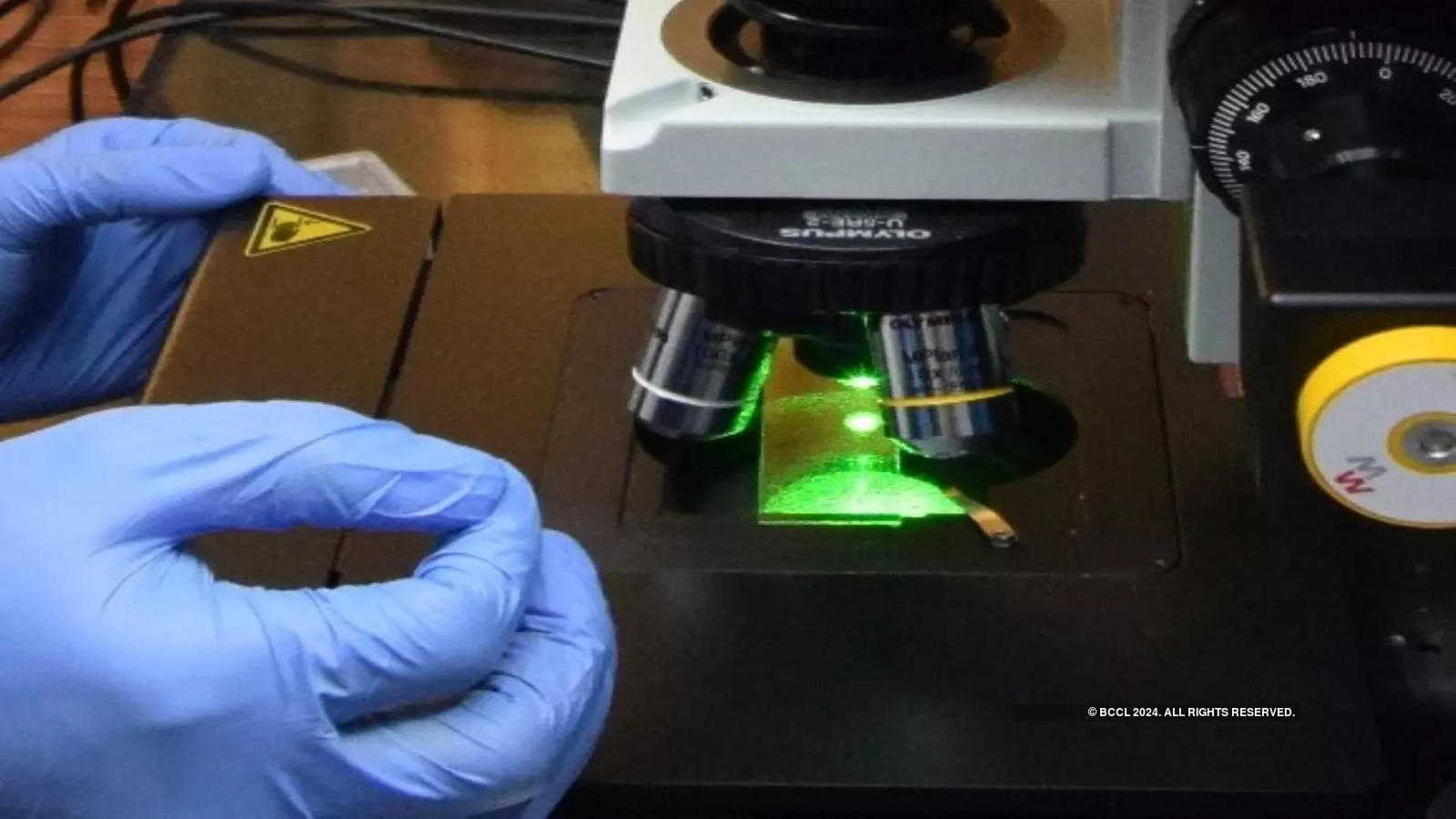
- 18 Jan 2024
Why is it in the News?
The Union government recently launched India’s first graphene centre ‘India Innovation Centre for Graphene (IICG)’ at Maker Village Kochi.
About India Innovation Centre for Graphene (IICG):
- India Innovation Centre for Graphene (IICG) is India’s first Graphene Centre.
- It is a joint venture of the Digital University of Kerala, the Centre for Materials for Electronics Technology (C-MET) and Tata Steel Limited.
- Key Aspects: IICG is committed to advancing research and development, fostering product innovation, and enhancing capacity building in the field of Graphene and two-dimensional materials (2DM).
- With a vision to bridge the gap between research and commercialization, IICG actively supports the Graphene-Aurora program initiated by the Ministry of Electronics and Information Technology (MeitY).
- This program aims to provide a comprehensive facility for startups and industries to facilitate seamless progression from research and development to commercialization.
About Graphene:
- Graphene is a one-atom-thick layer of carbon atoms arranged in a hexagonal lattice, serves as the fundamental building block of Graphite, utilized in various applications, including pencil tips.
- Scientists first isolated Graphene in 2004.
Properties of Graphene:
- Recognized as the world's thinnest material, Graphene boasts a thickness of only one atom, making it one million times thinner than human hair.
- Despite its extreme thinness, Graphene exhibits exceptional strength, surpassing even steel and diamond.
- It functions as an outstanding conductor of both heat and electricity, surpassing copper in electrical conductivity.
- Remarkably transparent, Graphene absorbs only 2% of light.
- Impermeable to gases, including lightweight gases like hydrogen and helium.
Applications:
- Mechanical Strength: Used to enhance the strength of various materials.
- Thermal Applications: Ideal for creating heat-spreading solutions, such as heat sinks or heat dissipation films.
- This has applications in microelectronics (e.g., improving the efficiency and lifespan of LED lighting) and larger applications like thermal foils for mobile devices.
- Energy Storage: Due to its minimal thickness, Graphene possesses an exceptionally high surface-area-to-volume ratio, making it promising for use in batteries and supercapacitors.
- It holds the potential to enable energy storage devices, including batteries, supercapacitors, and fuel cells, with increased energy storage capacity and faster charging capabilities.
- Future Potential: Graphene shows promise in various potential applications, including anti-corrosion coatings and paints, precise sensors, efficient electronics, flexible displays, solar panels, accelerated DNA sequencing, drug delivery systems, and more.
Telangana signs agreement with WEF for setting up C4IR in Hyderabad (The Hindu)

- 18 Jan 2024
Why is it in the News?
Recently, Telangana has signed an agreement with the World Economic Forum (WEF) to establish the Centre for Fourth Industrial Revolution (C4IR) in the state capital, Hyderabad.
About the Centre for Fourth Industrial Revolution (C4IR):
- C4IR is a global initiative of the World Economic Forum (WEF) to collaborate with governments, businesses, academia, and civil society to address the challenges and opportunities posed by the Fourth Industrial Revolution (4IR).
- The focus of this collaboration is to use technology for advancements in the life sciences and healthcare sector, particularly aiming to meet healthcare targets for the state’s population.
- Telangana aims to become a hub for health technology and a global centre for healthcare services.
About Fourth Industrial Revolution (4IR):
- Klaus Schwab, the executive chairperson of the World Economic Forum (WEF), coined the term 4IR in 2016.
- This term refers to advancements in artificial intelligence, machine learning, 5G technology, the Internet of Things, robotics, biotechnology, quantum computing, and more.
- These technologies offer new possibilities for organizations, allowing them to dream big and expand into areas that were previously unimaginable.
The World Economic Forum
- The World Economic Forum is the International Organization for Public-Private Cooperation.
- The Forum engages the foremost political, business, cultural and other leaders of society to shape global, regional and industry agendas.
- It was established in 1971 by German engineer and economist Klaus Schwab.
- It is a not-for-profit foundation and is headquartered in Geneva, Switzerland.
- The Forum strives in all its efforts to demonstrate entrepreneurship in the global public interest while upholding the highest standards of governance.
How GM mustard was developed, why the question of its approval has now reached the Supreme Court (Indian Express)
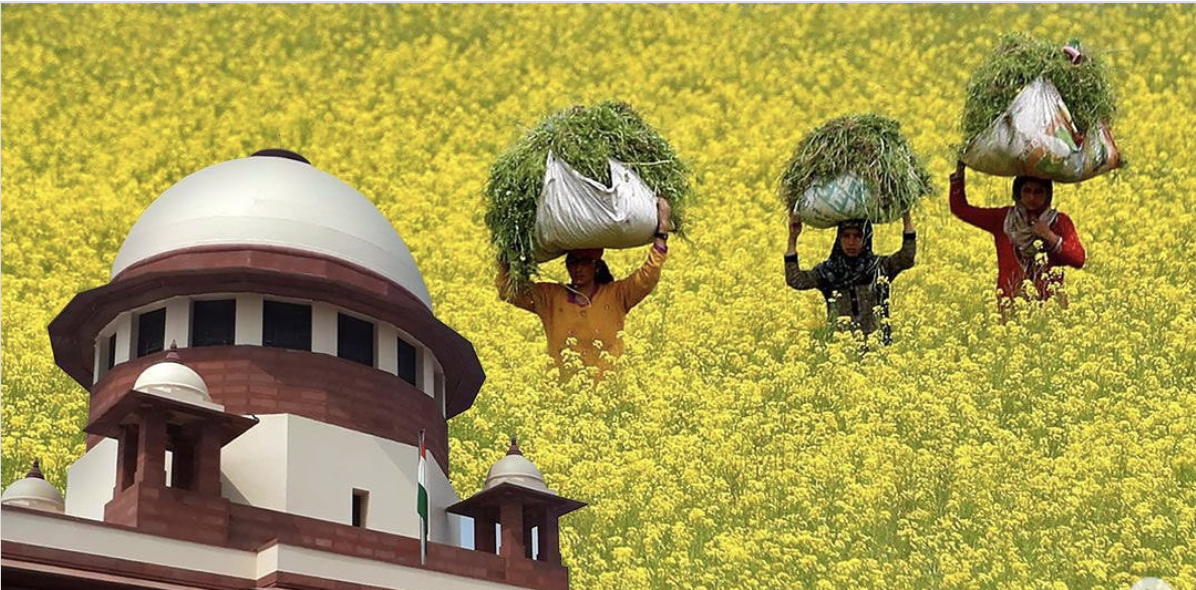
- 13 Jan 2024
Why is it in the News?
The Supreme Court recently questioned the Centre on why reports of the court-appointed Technical Experts Committee (TEC) on the biosafety of genetically modified (GM) crops were not looked into by the Genetic Engineering Appraisal Committee (GEAC).
Context:
- The Supreme Court has raised concerns about the approval process for the transgenic mustard hybrid DMH-11, developed by Delhi University with herbicide-tolerant traits through genetic modification.
- The Genetic Engineering Appraisal Committee (GEAC) had recommended its environmental release in 2022, but the court questioned whether the reports from the court-appointed Technical Experts Committee (TEC) were adequately considered before approval.
- DMH-11 contains two alien genes isolated from a soil bacterium called Bacillus amyloliquefaciens.
- Indian scientists improvised the barnase/barster male sterility technique to produce the DMH-11.
-
- Barnase/barster male sterility technique is a 1990s breeding innovation technique pioneered in Belgium.
- Indian scientists arranged the genes in a way that will allow a large number of high-yielding varieties of mustard to be developed, which is normally not possible.
- Genetically Modified Organisms (GMOs) undergo genome alterations, and transgenic organisms result from the introduction of foreign DNA sequences.
- Approval process for transgenic crops:
-
- Safety assessments by committees are conducted before the open field tests.
- Transgenic plants must be better than non-GM variants and environmentally safe for commercial clearance.
- GEAC recommends environmental release.
- Final approval by MoEFCC.
- Benefits of GM crops:
-
- Resistance against plant diseases.
- Improved yields
- Increased food security.
About the Genetic Engineering Appraisal Committee (GEAC):
- Establishment: GEAC operates as a statutory body mandated by the Environment Protection Act of 1986.
- Responsibility: It holds the responsibility for evaluating proposals concerning the environmental release of Genetically Modified (GM) organisms and associated products.
- GEAC operates under the purview of the Ministry of Environment, Forest and Climate Change.
The Process of Selecting Tableaux for the Republic Day Parade (Indian Express)
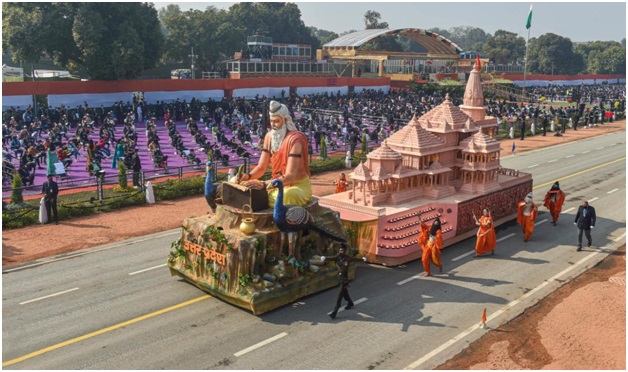
- 11 Jan 2024
Why is it in the News?
India’s Republic Day celebrations are incomplete without colourful tableaux cantering down the Kartavya Path (formally Rajpath). Showcasing India’s rich and diverse cultural heritage, they add colour to the grand event on January 26.
Who can send tableaux to the Republic Day parade?
- According to the Ministry of Defence (MoD), each year, a select number of “State Governments/UT Administrations/Central/Ministries/Departments” send their tableaux to the Republic Day parade.
- There is a rigorous application process which begins with interested parties submitting a concept note, along with design blueprints to the MoD.
How does the selection process work?
- The tableaux proposals received are evaluated by a committee of experts appointed by the MoD, comprising prominent persons in the fields of art, culture, painting, sculpture, music, architecture, choreography, etc. The selection process happens in a phased manner.
- STAGE 1 involves the assessment of the initial proposals and the design sketch/blueprint.
- The Committee sits alongside official representatives of the participants and suggests modifications, if necessary.
- A number of proposals may be rejected in this stage itself.
- STAGE 2 involves the assessment of three-dimensional models of the proposals.
- If the Committee is satisfied with the model, then the tableau is selected and further sent for fabrication.
- The Committee can also suggest changes to models before selection.
- Crucially, while the process is envisioned to be collaborative, the Committee has the final say on which tableaux are chosen, and can order any modifications they feel are required.
What is the basis of selection?
- Selection depends upon a combination of factors including but not limited to visual appeal, impact on the masses, idea/theme of the tableaux, degree of detailing involved in the tableaux, music accompanying the tableaux, local artists used etc.
- Each year, the MoD comes up with an overarching theme, under which, participants can showcase elements relevant to their respective state/UT/department in their tableaux.
- This year’s theme is “Viksit Bharat” (Developed India) and “Bharat: Loktantra ki Matrika” (India: the Mother of Democracy).
- The Defence Ministry also shares the basic guidelines about what all the tableaux can or should include.
- The participating entities must engage “young qualified designers from renowned institutions”, electronic display walls for a bright display of images or content, moving elements using robotics or mechatronics, 3D printing could be used for certain elements, use of augmented or virtual reality, and special effects to improve the optics and visual effects of the tableau.
- Extra weightage is given to tableaux which conform to these guidelines.
- Importantly, the tableaux of two different states/ UTs must not be too similar, and eco-friendly materials must be used for their construction.
Centre asks Manipur government to study representation on removing Kuki-Chins from ST list (The Hindu)
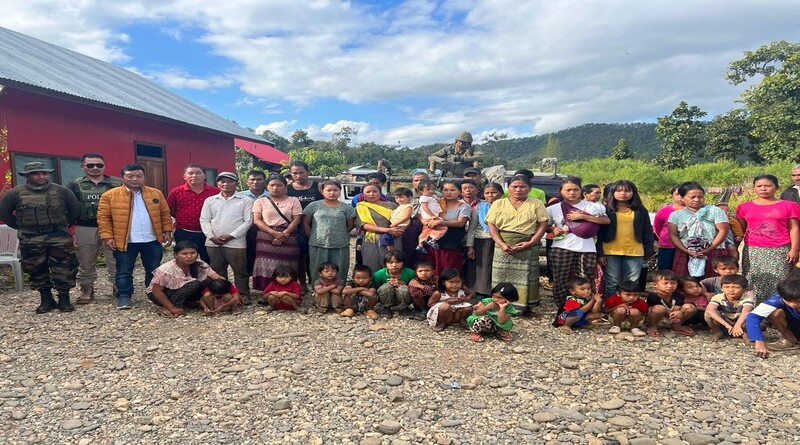
- 09 Jan 2024
Why is it in the News?
The Manipur government has been asked by the Centre to examine a representation seeking deletion of the “Nomadic Chin-Kuki” from the list of Scheduled Tribes in Manipur.
Context:
- The petition advocates that the primary criterion for categorizing Scheduled Tribes in the country should be based on Indigeneity, referencing a Supreme Court ruling dated January 2011.
- The petition specifically highlights the case of the "Zou" tribe, asserting that their origin in Myanmar's Chin state, a foreign territory, was not documented in pre-independence Indian Censuses.
- Consequently, the plea argues against the inclusion of the "Zou" tribe in the Scheduled Tribe list of Manipur.
About Kuki and Zomi Tribes:
- The Kuki-Zomi Tribes represent an ethnic group originating from the Bangladesh region, primarily residing in Manipur and Mizoram in India.
- Also recognized as Chin or Mizo people, they share a unified ancestry and culture.
- Their communication is conducted through various dialects within the Chin-Kuki-Mizo language family, belonging to the Tibeto-Burman branch of the Sino-Tibetan languages.
- The Kuki-Zomi Tribes are interconnected with the broader Zo people, alongside other tribes such as Chin and Mizo.
What is the Process of amendment in the ST List?
- The inclusion or exclusion of any tribe or tribal community from the Scheduled Tribes list is exclusively governed by legislation enacted by the Parliament of India.
- Amendments to the list are effectuated through notifications issued under clause (1) of Article 342, specifying Scheduled Tribes.
- According to a Supreme Court ruling, the authority to modify, amend, or alter the Scheduled Tribes list specified in the notification under Article 342(1) is not vested in State governments, courts, tribunals, or any other entity.
- Contrary to this, the central government asserts that the initiation of proposals for inclusion or exclusion from the ST list must originate from the respective State government.
- The Parliament then takes action based on this proposal.
- The Lokur Committee, in 1965, laid down the criteria employed by the government to designate communities as Scheduled Tribes, and these criteria persist in use today.
- They encompass primitive traits, distinctive culture, geographical isolation, shyness of contact with the larger community, and backwardness.
Centre, SEBI will regulate short selling, Solicitor-General tells Supreme Court (The Hindu)

- 04 Jan 2024
Why is it in the News?
The Supreme Court judgement records a statement made by Solicitor General Tushar Mehta that the Union government and the Securities and Exchange Board of India (SEBI) will take measures to regulate short selling.
What is Short Selling?
- Short selling is a financial strategy where an investor or trader borrows securities, such as stocks, from a broker and sells them in the market with the expectation of buying them back at a lower price in the future.
- Short selling is regulated by a circular notified by SEBI in December 2007.
- This technique is employed by individuals who anticipate a decline in share prices, aiming to profit from their predictions.
- The process involves selling shares that the trader does not own.
- To initiate a short position, the trader borrows shares from a broker, who lends them with an agreement for return at the settlement time.
- The borrowed stocks are then sold at the prevailing market rate, creating a short position.
- Subsequently, the trader waits for the prices to decrease before buying back the shares to close the position.
- The ultimate goal of short selling is to 'sell high and buy low.'
- Profits are made when share prices fall, and the trader benefits from the difference between the selling and repurchasing prices.
- Conversely, if the trader's analysis is incorrect and share prices rise, they incur a loss.
How Does Short Selling Work?
Short selling is an activity that allows market participants to profit from the fall in the price of a financial instrument. It involves borrowing an asset from a broker, selling it in the market, and then repurchasing it later at a hopefully lower price to return it to the lender.
- Borrowing the Asset: The trader borrows the asset (usually stocks) from a broker or another trader.
- This borrowed asset is typically done through a margin account, where the investor agrees to certain terms and pays a fee or interest for the borrowed amount.
- Selling the Asset: After obtaining the borrowed asset, the trader immediately sells it on the market.
- This is where they take advantage of their belief that the asset's price will decrease.
- Waiting for Price Drop: The trader waits for the price of the asset to fall. If the price drops as anticipated, the investor can buy back the asset at a lower price.
- Repurchasing the Asset: Once the price has dropped, the trader uses the proceeds from the initial sale to repurchase the same asset at a lower price.
- Returning the Borrowed Asset: Finally, the trader returns the borrowed asset to the lender, typically the broker, from whom they originally borrowed it.
- Profit or Loss: The profit or loss in short selling is the difference between the price at which the asset was sold and the price at which it was repurchased, minus any borrowing fees, interest, or transaction costs.
Short selling is considered a more advanced and riskier trading strategy, and it requires careful monitoring of market conditions. It is often used by experienced investors or hedge funds seeking to profit from anticipated price declines in specific securities or markets.
Why Rural India Needs Women Drone Pilots? (Indian Express)
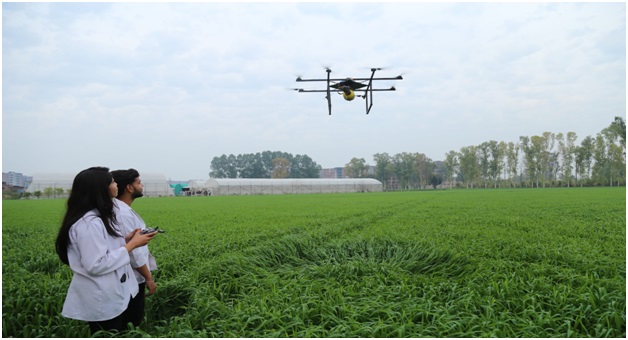
- 12 Dec 2023
Why is it in the News?
The NAMO Drone Didi Scheme provides new work opportunities to women and makes them the backbone of the rural economy.
What is the NAMO Drone Didi Scheme?
- The Prime Minister has recently approved the Central Sector Scheme (NAMO Drone Didi Scheme) for providing Drones to the Women Self Help Groups (SHGs), with an outlay of Rs. 1261 Crore.
- The scheme aims to provide drones to 15,000 selected Women SHGs during the period 2023-24 to 2025-2026 for providing rental services to farmers for agriculture purposes.
- The scheme seeks to empower women Self Help Groups (SHGs) and bring new technologies through drone services in the agriculture sector.
The highlights of this scheme are as follows:
- Departments involved: The scheme converges the resources and efforts of the Department of Agriculture & Farmers Welfare (DA&FW); Department of Rural Development (DoRD); Department of Fertilizers (DoF); Women SHGs and Lead Fertilizer Companies (LFCs).
- Identification of SHGs: The women SHGs would be identified from the total 89 lakh SHGs formed under the Deendayal Antyodaya Yojana.
- Financial Assistance:
- Central Financial Assistance covering 80% of drone costs up to a maximum of Rs. 8 Lakh will be provided.
- The remaining amount can be raised through the National Agriculture Infra Financing Facility (AIF) with a provision of interest subvention @ 3% on the AIF loan.
- Training:
- One of the members of SHGs will be trained in drone piloting skills and agriculture purposes of nutrient and pesticide application.
- Another member will be trained as a drone technician.
- This will allow them to not just operate the drone but also repair and maintain it.
- Nano Fertilizers: The scheme also promotes the use of Nano Fertilizers like Nano Urea and Nano DAP through drone services.
- Opportunities for Start-ups: The scheme not only empowers women but also opens avenues for dynamic start-ups in the field of drone aeronautics, tapping into significant untapped potential in this emerging sector.
Significance of the NAMO Drone Didi Scheme:
- Empowering Rural Women: Fosters technological empowerment of rural women, positioning them as the backbone of the rural economy.
- Places drone technology in the hands of women pilots from Self-Help Groups (SHGs).
- Modernizing Agricultural Practices: Addresses the imperative to modernize agricultural practices.
- Aims to elevate agricultural productivity through cutting-edge technology, contributing to a new agricultural revolution.
- Job Opportunities in Drone Aeronautics: Creates opportunities in the emerging field of drone aeronautics with substantial untapped potential.
- Opens avenues for rural women as pilots, mechanics, and spare-part dealers.
- Efficient Fertigation System Development: Facilitates the development of an efficient fertigation system.
- Introduces innovative liquid fertilizers like Nano Urea and Nano DAP with foliar application.
- Time-Efficient Spraying System: Automation of the spraying system through agri-drones ensures a time-saving and efficient application system.
- Equitable Agrarian Family Culture: Contributes to making the agrarian family culture more equitable and robust.
Digital Crop Survey System (Indian Express)
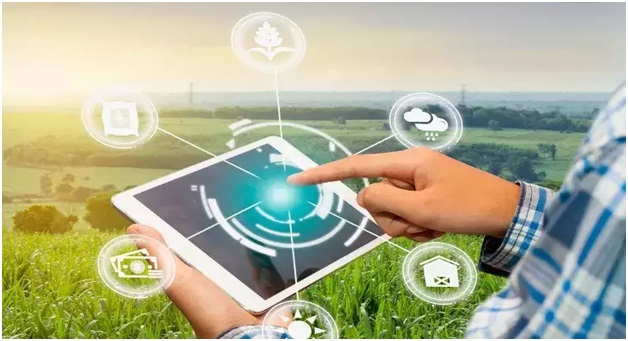
- 19 Oct 2023
Why in the News?
Emphasizing the current manual nature of crop area and production estimation, the Central Government has urged states and Union Territories (UTs) to transition to a digital approach by implementing the Digital Crop Survey System starting in July next year.
About the Digital Crop Survey:
- As a part of the Digital Crop Survey initiative, the Ministry of Agriculture and Farmers Welfare (MoA&FW) has instructed states to capture data on essential parameters, encompassing:
- Village name, year, season, farmer ID, farm ID,
- Crop name (at the farm plot level),
- Crop variety,
- Crop sown area (at the farm plot level),
- Geotags of crop photos,
- Geotags of the farm boundary where the crop is cultivated,
- Sowing/planting date (at the farm plot level),
- Irrigation type (at the farm plot level), and
- Irrigation source (at the farm plot level).
- This directive follows the introduction of a pilot Digital Crop Survey across multiple states earlier this year.
- In a parallel initiative, the MoA&FW has also revised the release timelines for crop estimates.
- Previously conducted in five phases, the ministry has streamlined the process by eliminating the fourth phase traditionally released in August.
- The ministry now plans to unveil comprehensive final estimates encompassing all states and seasons (kharif, rabi, summer) in September-October, departing from the earlier practice of releasing final estimates in February of the subsequent year.
Guidelines for the Digital Crop Survey:
- According to sources, the Economics, Statistics and Evaluation Division (ESED) under the Ministry of Agriculture and Farmers’ Welfare (MoA&FW), has finalised the guidelines.
- According to the guidelines, all states/ UTs shall automate/digitise the process of area enumeration/girdawari of crops at field level, i.e., Digital Crop Survey, from 2024-25 Agricultural Year.
- In India, the agriculture year begins in July and ends in June, the following year.
- Under the guidelines, states and UTs shall use GPS-enabled mobile applications for collecting crop-sown data of each plot for each season and share the village-level aggregated data with DA&FW through API only.
Need for the Digital Crop Survey:
- The current methodology for gathering and consolidating crop statistics relies entirely on manual processes across most states, leading to delays and human errors in the data compilation.
- Only a handful of states, such as Karnataka, Telangana, and Andhra Pradesh, have embraced a digital approach to data collection through GPS-enabled mobile applications, particularly for the recording of crop area and Collection of Cost of Cultivation and Equipment Survey (CCEs) data directly from the fields.
- While Maharashtra and Madhya Pradesh have implemented digital systems, they are primarily focused on recording crop areas.
- India faces a challenge due to the lack of dependable agricultural production estimates, accentuating the necessity for a "real-time assessment estimate" of crops.
- Recognizing this gap, there is a compelling need to modernize the current production estimation system by incorporating technological interventions.
Sangai Deer (Indian Express)
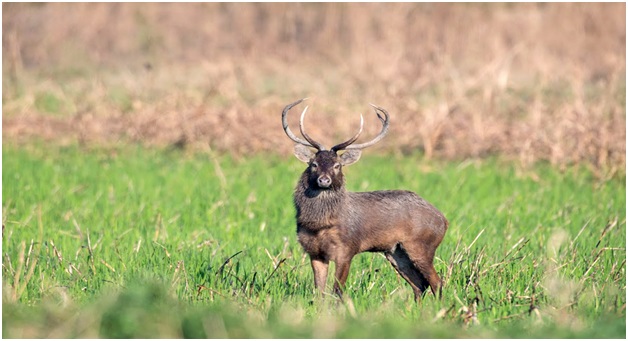
- 25 Nov 2023
Why is it in the News?
The Manipur Government has expressed its reservations to the Centre over a hydro-electric modernisation plan in the state’s famous Loktak Lake saying it could be detrimental to the endangered species of Sangai deer apart from disturbing the biodiversity of the lake.
About Sangai Deer:
- The sangai is an endemic and endangered subspecies of Eld's deer found only in Manipur, India.
- It is also the state animal of Manipur.
- Its common English name is Manipur brow-antlered deer or Eld's deer and the scientific name is Rucervus eldii eldii.
- It is believed to have originated from a common ancestor of the brow-antlered deer family, which is thought to have existed in the region during the Pleistocene epoch, around 12,000 years ago.
- Its original natural habitat is the floating marshy grasslands of the Keibul Lamjao National Park, located in the southern parts of the Loktak Lake, which is the largest freshwater lake in eastern India.
- Appearance: is a medium-sized deer that is unique in appearance and behavior.
- The Sangai deer is a slender and graceful deer, with long legs and a thin neck. They have a height of around 90-100 cm at the shoulder and can weigh between 70 to 120 kg.
- Food Habits: The Sangai deer is primarily found in the marshy wetlands of the Loktak Lake in Manipur, where they feed on the vegetation growing on the floating biomass called “Phumdis.”
- They are known to feed on a wide variety of plants, including grasses, sedges, and herbs.
- Vulnerable Species: The Sangai is an endangered species and is listed in Schedule I of the Indian Wildlife Protection Act of 1972.
- The population of Sangai deer has been severely threatened due to habitat loss, hunting, and poaching.
- In the 1950s, the population of the Sangai deer was estimated to be around 600-700 individuals.
- However, by the 1970s, the population had declined to less than 100 individuals due to extensive hunting and habitat loss.
- The Government of India and the State Government of Manipur took several conservation measures, including the establishment of the Keibul Lamjao National Park in 1977, to protect and conserve the Sangai deer.
- The Sangai deer is a social animal and is usually found in small herds of 2-20 individuals.
- Protecting and conserving their natural habitats is one of the most effective ways to ensure the survival of these species.
- This can be achieved through the creation and management of protected areas, such as national parks and wildlife reserves, and the restoration of degraded habitats.
'World's Largest Meditation Centre': PM Modi inaugurates Swarved Mahamandir in Varanasi (ET)
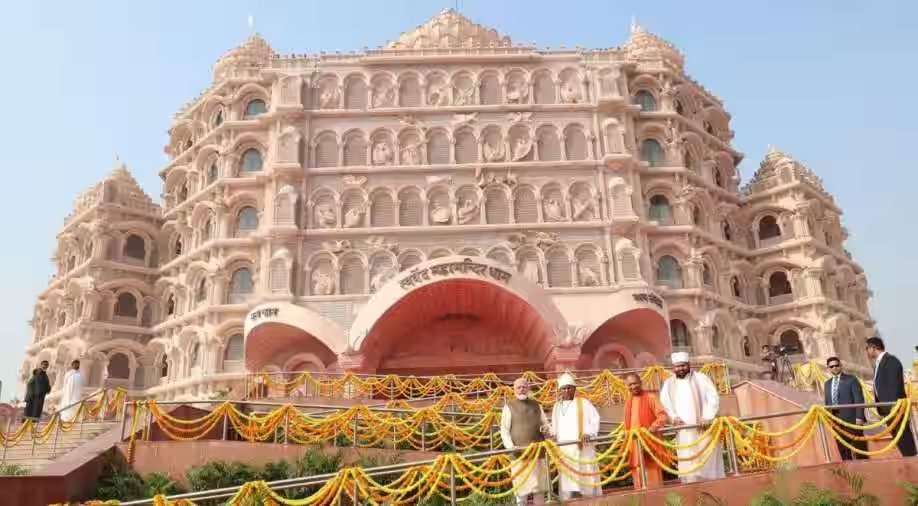
- 19 Dec 2023
Why is it in the News?
Prime Minister Narendra Modi inaugurated the world’s largest meditation centre, Swarved Mahamandir, in Varanasi on December 18.
About the Swarved Mahamandir:
- The Swarved Mahamandir stands as the world's largest meditation centre, accommodating 20,000 individuals in collective contemplation.
- Situated in Varanasi, Uttar Pradesh, this spiritual haven aspires to cast a luminous spiritual aura, enveloping the globe in a state of tranquil attentiveness.
- Named after the Swarved, a profound spiritual text penned by Sadguru Shri Sadafal Deoji Maharaj, the visionary behind Vihangam Yoga and an enduring yogi, the temple serves as a bastion for disseminating Swarveda teachings.
- Emphasizing Brahma Vidya, a profound body of knowledge, it guides spiritual seekers toward sustaining an unwavering equilibrium of peace and happiness.
- Architecturally, the Mahamandir is an imposing seven-floor superstructure, adorned with a captivating design featuring 125-petal lotus domes.
- Crafted from teakwood, the intricate carvings embellishing the ceiling and doors add to its allure.
- Pink sandstone envelops the temple walls, complemented by an enchanting garden featuring medicinal herbs.
- Imprinted on the Mahamandir's walls are verses from the Swarveda, serving as an enduring testament to the spiritual wisdom that resonates within its sacred confines.
What is Vihangam Yoga?
- Vihangam Yoga, an indigenous form of Yoga and meditation, was established by Sadguru Sadafal Deo Ji Maharaj in 1924.
- The nomenclature of this practice is derived from two foundational words: "Vihag," signifying bird, and "Yog," denoting union.
- The name encapsulates the profound concept of a bird ascending from the terrestrial realm, soaring high and unbounded in the sky.
- This symbolism mirrors the ultimate aim of Vihangam Yoga – the liberation of the soul from attachments to the material world, allowing it to recognize and embrace its innate, unshackled essence.
- Only through this liberation can an individual's consciousness seamlessly merge with the universal consciousness, often referred to as the Supreme Being, leading to a state of enduring tranquillity and bliss.
MoEFCC has launched the Indian Forest & Wood Certification Scheme to promote sustainable forest management and agroforestry practices across the country (Indian Express)
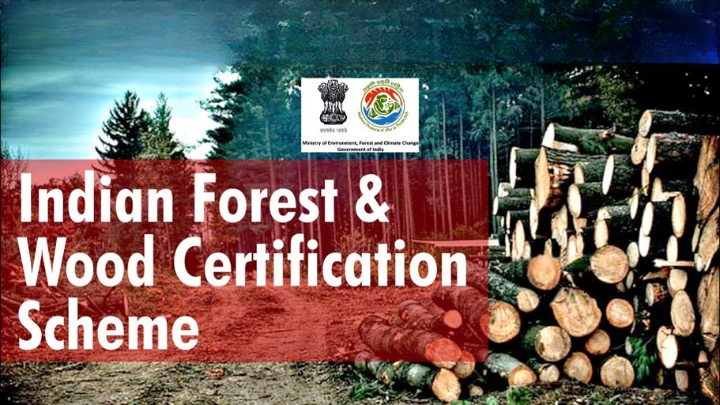
- 19 Dec 2023
Why is it in the News?
Amid rising international concerns about deforestation and illicit trade in timber, the government has launched its own “national” forest certification scheme to validate entities that adhere to sustainable practices in the management of forests and their products.
About the Indian Forest & Wood Certification Scheme (IFWCS):
- The Indian Forest & Wood Certification Scheme (IFWCS) serves as the national forest certification initiative, focusing on fostering sustainable forest management and the sustainable utilization of Trees outside Forests (TOF) across India.
- Voluntary Participation: The scheme provides a voluntary third-party certification mechanism to encourage agroforestry practices within the country.
- Alternatives to Foreign Certifications: IFWCS presents an indigenous alternative to foreign certification agencies that have been prevalent in the Indian market for the past two decades.
- Applicability: The certification applies nationwide, covering both forest areas and TOF plantations on government, private, agroforestry, and other lands.
- It encompasses both timber and non-timber forest produce (NTFP).
- Necessity: With major export markets like Europe and the United States imposing stricter rules on forest product imports due to deforestation concerns related to climate change, IFWCS can provide market incentives for entities practising responsible forest management.
- Significance: The scheme aims to enhance trust, transparency, and international acceptability of Indian forest-based products.
- It is especially beneficial for state forest departments, individual farmers, or Farmer Producer Organizations engaged in agroforestry.
- Compliance and Legal Status: While the certification may gain recognition from various regulatory authorities, it does not serve as legal advice on compliance with specific laws, regulations, or requirements.
- Foundation: Forest Management certification relies on the Indian Forest Management Standard, a crucial component of the National Working Plan Code 2023, introduced this year.
- The Indian Forest and Wood Certification Council, acting as a multi-stakeholder advisory body, will supervise the scheme.
- The council comprises members from esteemed institutions like the Indian Council of Forestry Research and Education, Forest Survey of India, and the Indian Institute of Forest Management, along with representatives from relevant ministries.
- Implementation: The Indian Institute of Forest Management in Bhopal will serve as the scheme's operating agency.
- Certification bodies conducting independent audits will be accredited by the National Accreditation Board for Certification Bodies under the Quality Council of India.
Management of Forests in India:
- The administration of forests in India aligns with individual working plans specific to each forest area.
- Recently, these plans have undergone revisions incorporating the newly formulated Indian Forest Management Standards.
- Comprising 8 criteria, 69 indicators, and 254 verifiers, these standards are obligatory for implementation across all forest divisions nationwide.
- While forest divisions are not compelled to obtain certification, adhering to these standards renders them eligible.
- The decision to pursue certification is contingent upon specific requirements and considerations.
INCOIS wave rider buoy washes ashore in Gopalpur (New Indian Express)
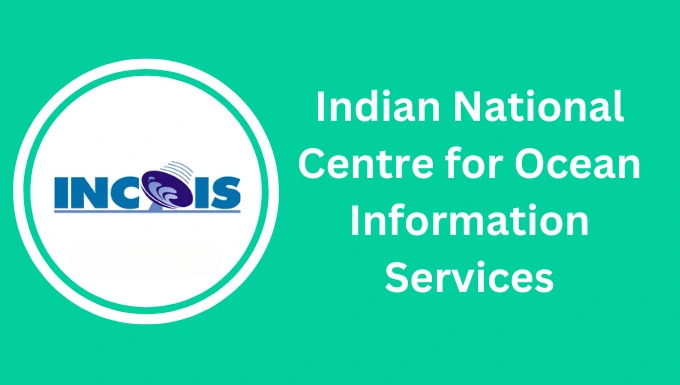
- 04 Dec 2023
Why is it in the News?
A wave rider buoy, equipped belonging to the Indian National Centre for Ocean Information Services (INCOIS), with GPS and various weather-related instruments, was found ashore at the Gopalpur Military Station in Ganjam district on Saturday.
About Indian National Centre for Ocean Information Services (INCOIS):
- INCOIS is an autonomous organization under the Ministry of Earth Sciences (MoES).
- It is a unit of the Earth System Science Organization (ESSO), New Delhi.
- It is located in Hyderabad & was established in 1999.
- The ESSO operates as an executive arm of the Ministry of Earth Sciences (MoES) for its policies and programmes.
- It is mandated to provide the best possible ocean information and advisory services to society, industry, government agencies and the scientific community through sustained ocean observations and constant improvement through systematic and focused research.
What is the Earth System Science Organisation (ESSO)?
- Earth System Science Organisation (ESSO) is a virtual organisation set up by the Ministry of Earth Sciences GOI in 2007 and it is the executive arm of MoES.
- It has three major branches of earth sciences viz.,
- Ocean Science & Technology
- Atmospheric Science & Technology
- Geosciences and Technology.
- The overall vision of the ESSO is to excel in knowledge and technology enterprise for the earth system science realm towards the socio-economic benefit of the Indian sub-continent and in the Indian Ocean region.
- The ESSO contributes to the areas of Weather (General) and Weather advisories specific to agriculture, aviation, shipping, sports, etc. Monsoon, Disasters (cyclones, earthquakes, tsunamis, sea level rise), Living and non-living resources (fishery advisory, poly-metallic nodules, gas hydrates, freshwater etc), Coastal and Marine Ecosystems and Climate Change, Underwater Technology.
The Supreme Court directed the governments to provide details on “the estimated inflow of illegal migrants into India.. after March 25, 1971”. (Indian Express)
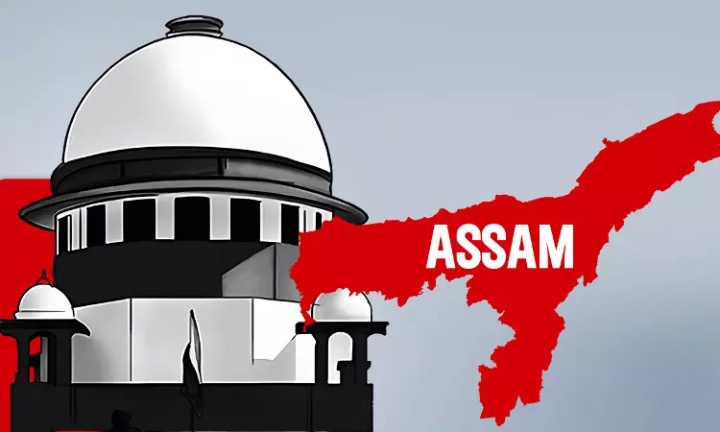
- 08 Dec 2023
Why is it in the News?
The Supreme Court on Thursday asked the Centre and Assam government to provide details on the “estimated inflow of illegal migrants” to Assam and other Northeastern states after March 25, 1971, and the status of border fencing.
News Summary:
- During the hearing of petitions, a five-judge bench of the Supreme Court expressed concerns about the perceived 'unlimited influx' of illegal migrants from Bangladesh, impacting demographics and straining resources for Indian citizens.
- The court questioned the application of Section 6A, granting Indian citizenship benefits to illegal migrants, solely in Assam and not in West Bengal, which shares a larger border with Bangladesh.
- The Supreme Court directed the Home Secretary to submit an affidavit by May 11, 2023, detailing the estimated inflow of illegal migrants, steps taken to address illegal immigration, and specifics on border-fencing extent and timelines.
- The government was also instructed to provide information on illegal immigration along the West Bengal border post on March 25, 1971.
Why Section 6A of the Citizenship Act, 1955 is Under Challenge?
- Presently, a Supreme Court bench is reviewing petitions from indigenous Assamese groups challenging Section 6A of the Citizenship Act.
- These groups assert that the special provision serves as a 'beacon' for illegal entrants to settle in Assam, gain Indian citizenship, and subsequently deprive locals of political, and economic rights, jeopardizing Assamese cultural identity.
- The petitioners question the constitutional validity of Section 6A, claiming it is arbitrary, specifically singles out Assam, violates Article 14, and has led to an influx of illegal migrants from Bangladesh.
- They advocate for establishing 1951 as the cutoff date for inclusion in the National Register of Citizens instead of 1971.
- The primary petitioner, Assam Sanmilita Mahasangha (ASM), argues that Section 6A is discriminatory, arbitrary, illegal, and infringes upon the rights of indigenous Assamese people by establishing a different citizenship cutoff date for Assam compared to the rest of India (July 1948).
What are the Arguments of the Central Government?
- The central government refutes the accusation of unfairly burdening the state with the responsibility of handling illegal migrants, contending that different states of India can be classified differently based on historical and geographical factors.
- According to the government, the classification implied in Section 6-A is founded on intelligible differentia.
- Dismissing claims of arbitrariness, the Centre asserts that the guarantee against non-arbitrariness under Article 14 does not mandate universal application for every law, irrespective of dissimilarity or the nature of the individuals it pertains to.
Food versus Fuel: What’s happening with Centre’s ethanol blending scheme (Indian Express)
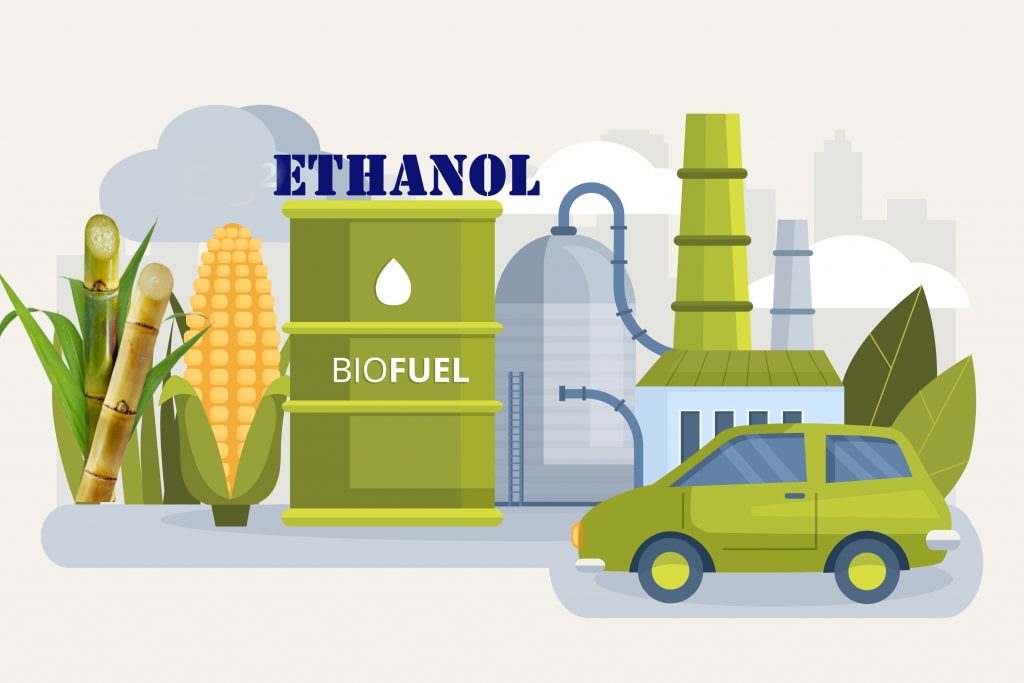
- 13 Dec 2023
Why is it in the News?
After banning sugar exports, the Centre has taken the next step towards augmenting domestic availability – restricting the diversion of the sweetener for ethanol production.
What is the Ethanol Blended Petrol (EBP) Programme?
- The Ethanol Blended Petrol (EBP) programme was launched in January 2003.
- The programme sought to promote the use of alternative and environment-friendly fuels and to reduce import dependency for energy requirements.
- Effective from April 1, 2019, across the nation (excluding UTs of Andaman Nicobar and Lakshadweep islands), Oil Marketing Companies (OMCs) sell petrol blended with up to 10% ethanol.
- The average ethanol blending in petrol has surged from 1.6% in 2013-14 to 11.8% in 2022-23.
- India targets a 20% ethanol blending ratio by 2025, revised from the initial 2030 deadline per the NITI Aayog's roadmap.
- Benefits of the EBP Programme:
- Reducing India’s import bill.
- Mitigating environmental pollution.
- Augmenting farm income.
- Offering a biofuel option with minimal additional investment for manufacturers.
- Challenges for 20% Ethanol Blending:
- Engine modifications are required to process petrol blended with 20% ethanol.
- Ethanol combustion yields no CO2, yet it doesn't address nitrous oxide emissions.
- Concerns about inefficient land use in ethanol production and the substantial water demand for cultivating crops.
- Food security considerations due to uncertainties about future agricultural output.
Why is the Restriction on Sweetener Diversion for Ethanol Production Imposed?
- Sugar Supply Concerns: Closing the 2022-23 sugar year with stocks slightly exceeding 57 lakh tonnes (lt), the lowest since 2016-17 (39.4 lt), raises apprehensions.
- The stock level falls significantly below the peak of 143.3 lt in 2018-19.
- Uncertainties surround the sugar production for the ongoing 2023-24 year, with Maharashtra and Karnataka anticipating substantial declines due to insufficient rainfall and low reservoir water levels in key cane-growing regions.
- Key Implication of the Decision: The recent decision, coupled with the ban on sugar shipments since May 2023, underscores a clear priority.
- Governments emphasize domestic supply over exports, favouring consumers over producers and prioritizing food over fuel.
Strategies to Boost Ethanol Production without Compromising Food Security:
- Diversification of Feedstocks: The government's ethanol policy, marked by favourable pricing and the incorporation of alternative feedstocks such as 2G ethanol sources, has been instrumental.
- The historical dependence on sugarcane-based feedstocks, which constituted 100% of ethanol sources (reduced to 76% in 2022-23), is no longer the sole reliance of the Ethanol Blended Petrol (EBP) program.
About Ethanol:
- Ethanol, an anhydrous ethyl alcohol having the chemical formula of C2H5OH, can be produced from sugarcane, maize, wheat, etc which have high starch content.
- In India, ethanol is mainly produced from sugarcane molasses by fermentation process.
- Ethanol can be mixed with gasoline to form different blends.
- As the ethanol molecule contains oxygen, it allows the engine to more completely combust the fuel, resulting in fewer emissions and thereby reducing the occurrence of environmental pollution.
- Since ethanol is produced from plants that harness the power of the sun, ethanol is also considered a renewable fuel.
Rashtriya Gokul Mission (RGM) (The Hindu)
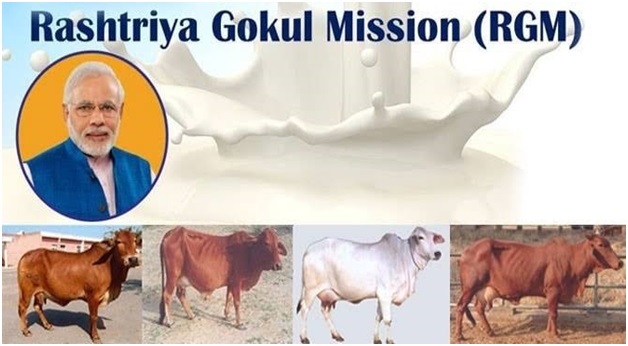
- 02 Nov 2023
Why in the News?
The Centre has decided to deploy National Level Monitors (NLM) to oversee the implementation of its livestock schemes including the National Livestock Mission and Rashtriya Gokul Mission.
About Rashtriya Gokul Mission (RGM):
- The Rashtriya Gokul Mission (RGM) has been implemented for the development and conservation of indigenous bovine breeds since December 2014.
- The scheme is important in enhancing milk production and productivity of bovines to meet the growing demand for milk and making dairying more remunerative to the rural farmers of the country.
- The scheme is also continued under the umbrella scheme Rashtriya Pashudhan Vikas Yojna from 2021 to 2026 with a budget outlay of Rs.2400 crore.
- The RGM will result in enhanced productivity and benefit of the programme, percolating to all cattle and buffaloes of India, especially with small and marginal farmers.
- This programme will also benefit women in particular since over 70% of the work involved in livestock farming is undertaken by women.
Objectives:
- To enhance the productivity of bovines and increase milk production in a sustainable manner using advanced technologies.
- To propagate the use of high genetic merit bulls for breeding purposes.
- To enhance Artificial insemination coverage through strengthening the breeding network and delivery of Artificial insemination services at farmer’s doorstep.
- To promote indigenous cattle & buffalo rearing and conservation in a scientific and holistic manner.
